
What Each Crew Position Wants You to Know
This article is a guide to show how small improvements can make a big difference for your fellow crew. Read on to learn what your crew wants you to remember each race!
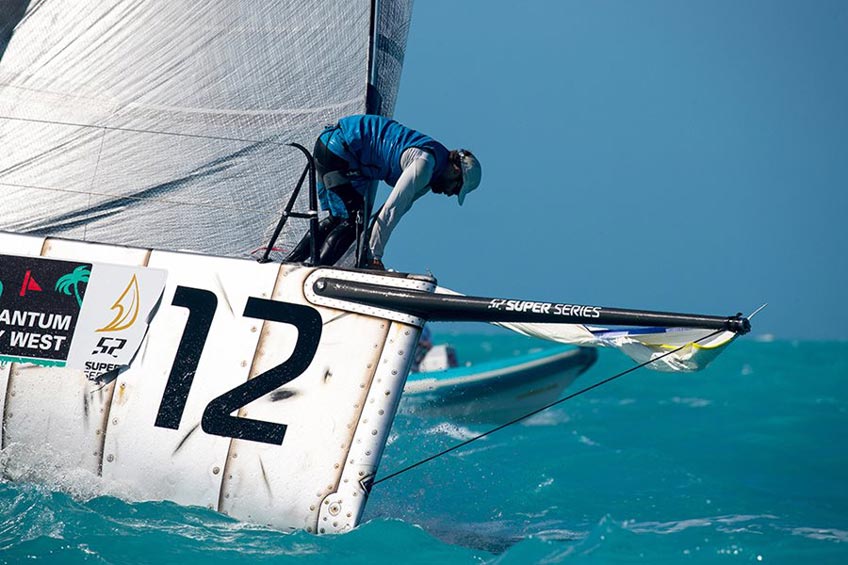
While it’s important to master your position on the boat, it’s equally as important to understand what’s going on in other domains and what you can do to make your teammates’ life easier and help the boat sail smoothly.
We reached out to a mix of successful sailors to find out what they want the other crew members to keep in mind to help them execute their job the best they can. Here’s what they had to say.
“The race is not over until the spinnaker comes down. It is easy to switch to recovery mode right after crossing the finish line, but this can be costly with a messy takedown, ripped or wet sail. To go along with this, after races finish send the jib bag up before the food bag! It’s frustrating for the bow when I’m are ready to flake the jib and everybody is eating.
I am happy to see the tactician’s general awareness of the bow team. We understand tacking mid jib-flake can’t always be avoided, but a quick cleanup with everyone cooperating makes life much easier. Lastly, my lifeline is the pit position, I like when this person is attentive and stays by their position until the bow team finishes cleaning up between races!” Anonymous bowman
“The mast is a lot easier when trimmers have patience on the set. They can pop the spinnaker open by sheeting too early and make the mast and foredeck look terrible! My key teammates are sewer and pit: a spinnaker set never works well if the trimmers, mast, sewer and pit are working independently, but when we hit on all cylinders, the set will be a thing of beauty. The other critical players to a happy mast are the tactician and helmsman. If the boat isn't in proper orientation to the wind when it is time to take the spinnaker down disaster can strike. A great bow/mast team will make it work, but a little waggle to help collapse the spinnaker goes a long way for a clean drop.” Andrew Spaulding*
“Be mindful of where things are thrown. For example: a jib change on the run, I may not be the one putting the old jib or bag down below, so I ask teammates to be mindful of the flaked kite halyard. I flake it once and then spend the rest of my run focusing on weight placement, pole position, finding the leeward marks and it becomes time consuming to have my head in the boat for longer than necessary.
The pit is in the middle of two groups. When it comes to maneuvers, the bow and brain trust may not always be on the same page, and I often have to decide which one to follow. If the back of the boat is calling for something that the bow is not ready to do; I can't force the issue. I can facilitate it, convey the sense of urgency, but I can't take the spinnaker down or jibe it by myself. This communication becomes easier if I receive clear and timely information from either end of the boat.” Scott Murin
Headsail Trimmer:
“Acknowledgment of communication. If I ask a teammate to do something, they should either act on it immediately or answer ‘copy’. If there is no acknowledgment, the person making the request often asks two or three times getting louder each time. I often see this situation and, my ultimate pet peeve is when the teammate finally answers and says ‘I HEARD YOU!’ When people say “copy” I can leave the task with them and move on. My other suggestion is to make habit of saying the person’s name before making a request so their attention is grabbed and time is not wasted by repeating what they didn’t hear before their name was called (this could be the difference between a collision and a race win).” Morgan Trubovich
“A briefing with the days goals. There should be a morning discussion describing the weather, potential courses, and anything else important. After the team is on the same page, people can break into groups depending on who they need to interact with throughout the day. I talk to my offside trimmer and grinders about what situations may come up and then I talk to the main trimmer about possible sails and boat settings.
It is also important to have quiet and calm maneuvers. I like to have ongoing discussions about what’s to come so when the boat is actually turning everyone has already anticipated their weight placement and I can focus on feeling the sheet run through my hands.” Dave Gerber
Main Trimmer:
“The most important thing is pressure calls and relatives. A main trimmer is ‘head in the boat’ which only gives them so much feel, so consistent and accurate information are crucial for boat speed. I am happy with simple dialogue with the tactician to know what modes are expected. If we develop standard steps, it becomes easy to be on same page.
The jib and main must also cooperate, they are constantly working together to make the boat do what the tactician wants. As a main trimmer, I let the jib do what they want and communicate when they are hitting the main or when they can be tighter. It’s good to develop concise key words and terminologies for any maneuver where the main has to be fine-tuned; some examples: high build, high kill, half tack, speed build, or racing.” Luke Lawrence
“I love it when new crew get onboard, listen to the race conversation and offer input where it might be lacking or where he/she can contribute value. For example, if no one is calling breeze on the rail, it’s great to have a crew take the initiative to make very concise and valuable breeze calls (Puff on in 3, 2, 1….). It’s also great when new crew take a few minutes to observe, listen and see what info or help might be needed instead of diving right in without first watching or thinking. It's valuable when a crew member offers input and "finishes the sentence." How many times have you heard someone say "...the right has a lot of pressure...." AND what??? Inquiring minds want to know. Finish the sentence: "... and they look strong/are headed/etc." Completing the sentence and picture for the tactician, driver and speed team is extremely helpful. A positive attitude and imploring the “5 second rule” (does what I’m about to say make sense and is it valuable? Am I finishing the sentence with my comment? ) make any crew a welcome addition to my boat." Ms. Sailsalot
“Come with a game face on. There is always time for bar talk, but it shouldn’t be before racing. I appreciate team members who get to the boat and prepare their position for racing. When people scatter and aren’t responsible for their area it takes away from what I need to be doing as a tactician and the performance suffers.” Geoff Ewenson
“Clear and short communication. I am happy when the trimmers and I are in sync with what steps we will take as conditions change. It is helpful for me to understand which way the trimmer is likely to move the leads, etc. as the breeze changes. For me, tactical input and observations are certainly invited before situations happen, especially 10 minutes before a start.” George Szabo
Boat Captain:
“Ask questions at the right time. I love when people want to learn and be involved with how the boat comes together, but choose a time when not much else is going on, probably not when I’ve just sat down to service a winch. I love it when each crew member takes responsibility for their station and addresses problems early, and to take it one step further if they are part of the solution whether it be a short term regatta fix or the long term ultimate fix, it’s fun to bounce ideas off others.
My life becomes easier when teammates self-delegate. I think of tasks as skilled and unskilled; if you are unsure how to help with the skilled boat work, there are always unskilled items that can be taken care of. Examples: filling water bottles, organizing down below, grabbing food and clean up. And if you still don’t know what to do, ask yourself, ‘If I were running this boat, what would I want done right now?’” Kyle Kant
*Editor’s Note: Shortly after publishing this piece, our team received the very sad news of Andrew Spaulding’s untimely passing. He was much loved by the sailing community and our team’s deepest sympathies go out to his friends, family and everyone who’s lives were touched by his wonderful spirit.
The Discussion

Us, too. We pour that passion into each of our newsletters to help you enjoy sailing even more.

Positions on a Racing Sailboat

Last Updated by
Gabriel Hannon
August 30, 2022
The success of a racing sailboat depends entirely on the ability of each person on the boat to know and execute their role in high-pressure situations.
While boat-dependent, all positions are some combination of the responsibilities of driver, bow, tactician, trimmer, and pit. The driver makes the final decisions and steers, while the other crew members play various roles providing information, trimming sails, and keeping the boat moving fast.
The fundamental responsibilities of sailboat racing do not change, regardless of the number of people aboard. Someone in a one-person dinghy has to be able to keep track of the course, make tactical decisions, trim sails, steer, watch for new breeze and other boats, and ensure that they are set up for the next leg. On a larger boat, with more sails, more controls, and more required coordination, these jobs still exist and are distributed amongst various crew members. We will go through the basic crew setups of various one-design racing boats from one through four crew members to develop how the increase in crew and complexity begins to distribute the responsibilities of making the boat go fast across the team. Then, we will make some general claims about bigger boats, but as everything gets more confusing in the larger crews, we will not specify too much.
Over years of racing boats of all sizes, I’ve seen these crew roles respond to personal skills, different boat setups, strange habits, and teamwork to the point where everyone can respond to different events seamlessly. Sometimes these roles are perfectly well-defined, but sometimes a quick-thinking crew will switch positions on a dime to make up for a mistake in an entirely unorthodox way that is somehow perfect. On smaller boats, people have different priorities and different ways to work through all their responsibilities, but on all the best boats it is the people who know how to excel in their role, and how to make life easier for all their teammates by knowing exactly what they need, who make a sailboat go. Let’s get into it!
Table of contents
The One-Person Dinghy: It’s All on You
You could argue that sailing, at its most basic, boils down to one sailor, a handful of lines, and a tiller against the breeze and water. Perhaps it would be a ridiculous argument, as sailing has always relied on people working together, but there is something to seeing who can go out there and be the one to make it work the best. When all the responsibilities for every inch of the boat fall on one person, it is interesting to see who has everything in sync the best. There is no specific title for this position, but I suppose you could call them
The Single-Handed Sailor
There are fundamentally three aspects to sailboat racing: boat speed, boat handling, and tactics. The single-handed sailor has to excel in each dimension. The best case study for a single-handed boat is the ILCA Dingy, once known as the Laser, but other notable racers include the Opti, Finn, RS Aero, Moth, and Wazsp classes.
Boat speed comes down to trimming the sails properly for the angle to the wind. This means adjusting not only how far in and out the sail is, but also tuning specific control lines to give the sail the ideal shape for wind strength and direction. Making micro-adjustments to sail trim while dealing with all the other aspects of the race may not seem like much, but they can make the difference between winning and falling behind. While on larger boats there are entire positions dedicated to this, the single-handed sailor has to deal with this the whole time.
Other factors in boat speed concern steering through the wind shifts and wave sequences properly and keeping the boat flat by hiking out. This often includes being able to shift weight in precise ways to keep the boat optimally balanced and cutting through the waves.
Boat Handling
While boat speed forms the basis of all sailing, it is also crucial to know how to maneuver the boat through course changes. Windows in sailing races are small, and being able to get a boat into a lane is often a fraught affair. Having the confidence to trim the sails properly and maneuver sharply while still maintaining speed is a huge boost to a racer. Turning points at marks or directional switches while tacking and gybing are where many of the gains in a race come, and a clean tack coming into the top mark on port can mean the difference between leading the fleet and having to duck behind a parade of 30 boats. Being able to put on the brakes and accelerate quickly is key in tight spaces along the start line, and is a weapon for the best sailors.
Singlehanded racers have total control over their boat handling. Changes in direction come down to perfect synchronization of sail trim, steering, and body weight, and the single-handed sailor has to account for how every single adjustment affects these maneuvers. Some of the best boat handlers grow up racing single-handed boats; the feel developed sailing solo is hard to beat but requires years of fine-tuning and muscle memory.
All the speed and maneuverability in the world does not do much if you don’t know where to put the boat. Like any sport, the fundamentals are simple, but becoming a master takes a lifetime. The single-handed sailor must hold the entire course, the regularity of the wind shifts, the tendencies of the current, the positions of the other sailors, and their own plans in the front of their minds while pushing the boat as hard as possible.
While this is no place to discuss the intricacies of upwind tactics or the fastest lines on a downwind in different boats, the singlehanded sailor has to be able to think and make decisions tactically then execute those decisions themselves. This is such a large task that bigger boats will often have someone whose entire job is just to call breeze and tactics.
The single-handed sailor is without a doubt a jack-of-all-trades. We will discuss various terms for different crew-members on bigger boats, and while you could use the terms ‘skipper’ or ‘driver’ for the single-handed sailor, this does not quite say it all, so we save these positions for the bigger boats. We will not explicitly break the other boats down by who is in charge of boat speed, boat handling, and tactics, but roles can generally sort into various levels of responsibility for these categories.
The Two-Person Racer: The Best (or worst) Way to Get to Know Another Person
On a two-person boat, of which common examples include the various 420 classes, the Olympic Classes (470, 49er, Nacra 17) among many others, responsibilities are slightly split, but this distribution comes with the tradeoff of greatly increased complexity and coordination requirements. Double-handed boats tend to have at least two, and often three, sails, require more involved tuning, move much faster, and occasionally require single or double trapezing. The very best doublehanded pairings move as one, but this type of coordination requires both sailors to have an intimate knowledge of their role and the dynamic balance of the boat. Without further ado, the common positions:
The Skipper (Driver)
The skipper of the boat steers the boat. On different types of boats, they have different trimming and setting responsibilities, most often including the mainsheet--though the 49er is a notable exception. You can call them either a skipper or a driver, but you rarely say that ‘you skipper;’ instead, you would say that ‘you drive,’ so the latter term has begun to stick as the position as well.
As they are the person driving the boat, the driver tends to make the final tactical decision. They do this in collaboration with the crew, who is often going to be feeding information about the course and competitors to the driver, but the final decision comes down to the person holding the stick (forgive the vernacular, if you may).
Different double-handed teams often have different dynamics. In some, the driver will primarily be focused on tactics, while the crew has to keep their head in the boat making it go fast, while in others the skipper lets the crew make such calls while focusing on the breeze right in front of them, it all depends. Boat handling requires nigh on perfect coordination, and skippers must keep their crews alerted to any upcoming maneuvers.
The unsung heroes of many a double-handed pairing, a good driver can sail well with an ok crew, but a crack crew can take a skipper with some potential to the top of the fleet.
Responsible for trimming the headsail and setting and managing the spinnaker on boats that carry them, the crew’s primary roles is to keep the boat going fast. They often can make the small sail trim and control adjustments that the driver cannot. Especially upwind, the crew scans the course for new breeze, other boats, lay lines, and any information that the skipper could need to make the best decisions possible.
A good way to consider some, but not all, skipper-crew relationships is that the crew can get all the micro-considerations out of the way so that the skipper can focus on the big picture. The small picture adjustments in terms of sail control and angle of heel keep the boat moving and the skipper zippered into the feel of the course. In turn, this allows the skipper to plan ahead and keep the crew involved in decision making, making sure that they don’t screw their crew with a crash tack or sudden gybe.
Still, on some teams, the crew makes all of the outside the boat decisions while the driver just drives the boat as fast as they can. This often works with spacier skippers, of which there are many, and highlights the value of a strong-willed crew. Crews are often on-the-water coaches for high-strung skippers and are key to the success of a team. On more athletic boats, a crew can crucially contribute to boat speed and handling through trimming, ooching, and body-weight adjustments.
All of this is to say that a crew, both as a single person on a double-handed boat and as an ensemble on larger boats, is never to be considered an accessory to the skipper, but are crucial parts of a competitive racing team.
The Three or Four Person Boat: I Thought That Was Your Job!
Having outlined the general dynamics of a skipper-crew pairing, it is not particularly helpful to discuss exact boat setups and interactions. From here, we will provide terms and positions with general roles. These are all subject to change, but once you reach boats of three or more people, roles become highly specialized, as boats of this size begin to get complex enough that you cannot do everything on your own. Let’s run through the general roles that must be filled on boats of up to four, with the knowledge that these can be switched around and combined depending on skill, boat setup, and breeze.
Things change yet they stay ever the same. The bigger the boat, the more boat the driver has to deal with, but the role does not fundamentally change. The driver still has their hand on the stick, and, despite the best attempts of various crewmembers, still is the final decision maker on the boat. Sometimes they will trim the mainsheet as well, but other times they will leave this to a member of the crew
The bigger the boat, the less running around the skipper does and the more focused they are on sailing the perfect line through the fleet. Even their ability to scan the course and make tactical evaluations wanes on the bigger boats, as they must put more trust in their crews to make the right reads. They are still ultimately responsible for putting the boat in the right spot, but they are ultimately unable to control everything that is happening on the boat.
Debatably the easiest analog to the crew on a double-handed boat, the bow is, if nothing else, the most likely person on the boat to get soaking wet. Sitting the farthest forward, they are occasionally responsible for trimming the jib--particularly on three-person boats--but primarily have to deal with setting the spinnaker and dealing with front-of-boat controls.
They can play a role calling tactics, breeze, and other boats, but because they are so often busy with the chaos of boat handling in crucial spots and are often far away from the skipper, they mostly need to focus on their role setting the chute and managing the complications near the front of the boat.
Trimmer/Tactician
Often sitting at the hip of the skipper, different boats have different assignments for their trimmers, which can range from main-trimming across the whole course to only touching the spinnaker off the breeze to controlling the jib instead of the bow. Regardless of the particulars, they need to make the adjustments that keep the boat moving fast, and need to be continually in sync with how the skipper wants to sail.
The person in this position is often responsible for communicating details about the course and from the rest of the crew to the driver. Their role gives them more time to look around and make fine adjustments, rather than having a continuous responsibility, so they are in the perfect position to survey the information at hand and collaborate with the skipper on decision making.
On three-person boats, this is generally one person playing both roles in active collaboration with a driver. On certain four-person boats, this can lead to two trimmers who alternate between calling tactics and trimming different sails depending on the leg. Other times, this role is fully bifurcated, with one person trimming and another entirely responsible for looking around and making calls, with only a menial role controlling the sails, but this looks different on every team.
While Nascar has its pit crews, beginning at four-person boats, sailing just has its pit person. As boats get bigger, sails and various lines are more prone to twists, knots, and the generalized snarls that give sailors across the world excuses to flex their famous propensity for swearing.
The pit is responsible for eliminating, or at least minimizing, these disasters via preventative prep. They do not have a conventional job trimming sails, per se, but they are the ones who make sure that everyone else can the sails set cleanly. They prefeed sheets, ‘run the tapes’ on off-the-breeze sails to make sure they aren’t twisted and are notorious neat freaks. They often are responsible for raising and lowering sails around mark roundings; these events are almost always chaotic and never go according to plan, so it is the pit who has to coordinate the chaos as much as possible and clean up the mess in time for the next explosion. Unheralded, often stuck below decks, the pit can be the difference between a boat running smoothly and a stream of curses over a huge gash in a thousand dollar spinnaker.
Now This Is Getting Ridiculous: The Road to Specialization
As of this point, we have covered the key roles on just about any sized boat. As you get to bigger and more specialized boats, the situations will call for more and more crew members doing increasingly focused work. While having talented sailors on a larger boat is no less important than having them on a smaller dinghy, there are simply not that many parts that have to be moving all the time to fully occupy more than a few people at a time.
Still, when they are needed, during gybes, mark roundings, sets, and douses, these extra crew members are crucial. On certain boats, there is an entire position dedicated to trimming the twings during gybes; the position is only slightly more serious than the sound of the ropes. Still, the other crew members are so busy during the gybes that they need the extra pair of hands. Furthermore, having a sharp sailor in a position like that ensures another pair of eyes and hands to spot problems and step in if needed. Knowledge and quick action are unlikely to go unappreciated on any boat, even if it is only in a very specific setting.
There is, however, one more term for extra crew members on boats of this size, and it is distinctly unspecialized: meet the ‘rail meat.’ On sufficiently big boats, where heeling is slow but a fact of life, every now and then you just need a big ole guy to sit on the edge and hang out to windward. A flat boat is a fast boat, and sometimes you just need someone hanging out over the rail, skilled and mobile or not.
Finally, on high-performance boats, like America’s Cup boats or the new-fangled SailGP league, rail meat is replaced by ‘grinders,’ who specialize in turning hydraulic cranks like they’re in a CrossFit gym. Sometimes drawn from other sports, famously including rugby players on New Zealand’s America’s Cup team, grinders may not have the tactical acumen to step into a single-handed boat and win the day, but they are key pieces to winning teams and are no less a sailor than anyone else.
Hopefully, next time you go down to the water and someone tells you they need someone to run their bow, this has done enough for you to know exactly what you’ve gotten yourself into! Happy sailing!
Related Articles
I have been sailing since I was 7 years old. Since then I've been a US sailing certified instructor for over 8 years, raced at every level of one-design and college sailing in fleet, team, and match racing, and love sharing my knowledge of sailing with others!
by this author
Most Recent

What Does "Sailing By The Lee" Mean?
Daniel Wade
October 3, 2023

The Best Sailing Schools And Programs: Reviews & Ratings
September 26, 2023
Important Legal Info
Lifeofsailing.com is a participant in the Amazon Services LLC Associates Program, an affiliate advertising program designed to provide a means for sites to earn advertising fees by advertising and linking to Amazon. This site also participates in other affiliate programs and is compensated for referring traffic and business to these companies.
Similar Posts

How To Choose The Right Sailing Instructor
August 16, 2023

Basics Of Sailboat Racing Explained
May 29, 2023

Cost To Sail Around The World
May 16, 2023
Popular Posts

Best Liveaboard Catamaran Sailboats
December 28, 2023

Can a Novice Sail Around the World?
Elizabeth O'Malley
June 15, 2022

4 Best Electric Outboard Motors

How Long Did It Take The Vikings To Sail To England?

10 Best Sailboat Brands (And Why)
December 20, 2023

7 Best Places To Liveaboard A Sailboat
Get the best sailing content.
Top Rated Posts
Lifeofsailing.com is a participant in the Amazon Services LLC Associates Program, an affiliate advertising program designed to provide a means for sites to earn advertising fees by advertising and linking to Amazon. This site also participates in other affiliate programs and is compensated for referring traffic and business to these companies. (866) 342-SAIL
© 2024 Life of Sailing Email: [email protected] Address: 11816 Inwood Rd #3024 Dallas, TX 75244 Disclaimer Privacy Policy

The global authority in superyachting
- NEWSLETTERS
- Yachts Home
- The Superyacht Directory
- Yacht Reports
- Brokerage News
- The largest yachts in the world
- The Register
- Yacht Advice
- Yacht Design
- 12m to 24m yachts
- Monaco Yacht Show
- Builder Directory
- Designer Directory
- Interior Design Directory
- Naval Architect Directory
- Yachts for sale home
- Motor yachts
- Sailing yachts
- Explorer yachts
- Classic yachts
- Sale Broker Directory
- Charter Home
- Yachts for Charter
- Charter Destinations
- Charter Broker Directory
- Destinations Home
- Mediterranean
- South Pacific
- Rest of the World
- Boat Life Home
- Owners' Experiences
- Interiors Suppliers
- Owners' Club
- Captains' Club
- BOAT Showcase
- Boat Presents
- Events Home
- World Superyacht Awards
- Superyacht Design Festival
- Design and Innovation Awards
- Young Designer of the Year Award
- Artistry and Craft Awards
- Explorer Yachts Summit
- Ocean Talks
- The Ocean Awards
- BOAT Connect
- Between the bays
- Golf Invitational
- Boat Pro Home
- Pricing Plan
- Superyacht Insight
- Product Features
- Premium Content
- Testimonials
- Global Order Book
- Tenders & Equipment
So you want to race? All you need to know to get into the game
"Start small,” says naval architect Malcolm McKeon . “Superyacht racing is not like anything most owners have experienced before.”
McKeon speaks from recent experience. “When we were designing and building the performance cruiser Missy , I asked the owner several times if he was sure he didn’t want me to arrange the deck for racing. His answer was always ‘I’m not going to race Missy ,’” he recalls. “Then he saw a Bucket-type regatta and decided ‘That looks like fun.’ He followed my advice: start small and get a taste for it. We raced Missy in the 2018 St Barths Bucket in the non-spinnaker division and he won. For 2019 he’s added a bolt-on bowsprit, a few spinnakers to improve downwind performance and hired more pros.”
Dutch naval architect Andre Hoek has worked with very similar owners. “Many of our superyacht owners actually said they would never race but end up doing it anyway,” he says. “My advice would be to have some sailing miles on the boat before you start racing and begin with the second year of ownership, not the first.”
For owners contemplating building a new yacht, Hoek advises designing the boat with an option to race from day one simply because he’s had a number of projects where owners changed their minds after the boat was built and decided to race full-on. “We advise clients to at least lay out the sail and deck plan for racing.”
Several experts pointed to a significant recent change for superyacht regattas: the handicapping system has been altered to even up the playing field, add safety factors and reduce the number of crew and sails needed by including a non-spinnaker class. As McKeon says: “It used to be that a 500-tonne yacht like Twizzle could do no better than middle of the fleet – even if she was sailed perfectly – racing against boats with deep keels and retractable sail drives. The new handicapping system puts a fair penalty on those features so that almost everyone has a chance.”
Hap Fauth, who owns racing and cruising boats, took part in the Newport and St Barths Bucket regattas with his 35.3-metre Whisper from 2003 to 2010. He stopped because he thought the handicapping system didn’t seem to understand luxury yachts. “These big displacement boats will have the same top speed if the wind is blowing 12 or 20. I realised I could spend $100,000 [£77,000] to campaign the boat with the best crew and still end up 23rd out of 35 boats. They fixed the handicap and we went back to St Barths for the Bucket in 2018.”
Recruiting rock stars
Drop in on any superyacht regatta and you’ll note some high-profile professional sailors with well-earned star status based on their expertise as a designer, rigger, sailmaker or veteran of many racing events. They often have key positions as navigators, tacticians, crew bosses or helmsmen. These men and women made and maintain their reputations, and their pay scales, by doing their part to make the programme successful, whether that is learning the race course and studying charts or learning the boat and its gear and the abilities of the rest of the crew. Far from being someone who is just here for the beer, a professional sailor works between 200 and 250 days a year. But is hiring a couple of rock stars and building a regatta team around them the way to go? “Before spending an owner’s money on a pro race crew, you have to get to the details,” says Ken Read, president of North Sails. “You really have to listen carefully when you ask an owner what he wants to get out of the event.
“I have a database of sailors for all the positions, including assistants to all those positions, and I classify them as amateurs or pros. But before I start picking, I go old-school; I draw the boat’s deck layout, including all winches, and I put circles where you need people to work. I look at the skill levels needed in each of those circles. Then, what members of the crew can I draw on? Some captains don’t want a specific position because they want to be able to move around putting out fires. Some captains came out of powerboats and don’t know how to race. My job is to get them to be honest about their abilities and comfort level and those of their crew.”
The next part is chemistry, Read says. “You want them to have a blast. You want the entire group to feel it’s the best day or set of days they have had because the group is just right. You don’t want to put a tough, hard-ass pro with an owner who would rather just have fun. Some pros see winning a regatta as a notch on their belt. There’s a place for that guy, but it might not be with an owner just starting out.”
According to Bruce Brakenhoff, president of Perini Navi USA , a regular full-time crew is key. “They know their boat, they maintain it and tune it,” he says. “They communicate to the race guys what can or cannot be done, how far their boat can or should be pushed.
“The idea of a rock star aboard is fun, but in my experience the most successful boats seem to have permanent crews who sail their boat often and know its sailing systems really well. These are the guys who really gel with a race crew that joins them for a week or two.” Fauth calls his boat’s five permanent crew “the backbone of the team. We aren’t a push-button boat with captive winches so it takes 15 to race,” he says. He plans his regatta crew around his selection for navigator, tactician and a crew boss who manages assignments and gets the boat set up for each race. Fauth takes the helm and Whisper’s captain floats to give an assist where needed.
The Js are unique
The J Class is a different animal altogether. Dan Jackson, who ran Ranger’s programme for the late John Williams, says: “ Ranger had eight permanent crew and raced with a full complement of around 35, including guests. Generally, we had 15 to 17 professionals. Js tend to try and keep the same crew at least for the season and, where possible, year on year. Ranger had a core race crew that rarely changed – we just added to it from available sailors as necessary. Keeping the team together reduces the amount of practice time needed before a regatta and therefore an owner’s expenses.”
Depending on the boat, the owner’s goals for the regatta and whether the boat is sailing in a spinnaker or non-spinnaker class, expect racing crew to double or triple the yacht’s regular crew complement, says Peter Wilson of management firm MCM . “When an owner says he wants to race, we want to make sure it’s a really good experience and picking the extra crew is critical. Most expert racers aren’t superyacht crew and most superyacht crew aren’t racers, but we find they really like learning from the pros.” Wilson often puts pros on the bow “because dropping a spinnaker while a jib is being raised or unfurled and the helmsman is rounding a mark isn’t something superyacht crew tend to experience”.
Wilson says he builds a spreadsheet of positions that need to be filled with the associated costs to build a budget for his clients and then adds in the non-personnel items such as transportation of the boat, dockage, spare parts, food and entertainment budgets and extra insurance riders. While Fauth says he often turns to his vendors for race crew, Wally founder Luca Bassani and Wally Class secretary Paolo Massarini both say they feel that the pro sailors who work for vendors should have their fees paid by their employers. “Their fees should be covered by the brand they are representing, but it is different from time to time. There is no fixed rule,” said Massarini.
Organising a regatta programme
“On the boats we manage,” says Wilson, “we try to lock in our team six months in advance for summer regattas. For something like the Antigua Superyacht Challenge [in January], there is not so much competition for crew so we can start later. Accommodation, on the other hand, you want to book as early as possible.”
While most superyachts take part in just one or two regattas a year, and hire race crew by the event, the more performance-oriented yachts, and tight-knit Wally classes may do four. Bassani says it is his preference, and his advice to owners, to book the pros for the season. “I hire people for the whole season of races and sea trials. In this way [they] have the chance to get to know your boat better, to prepare the boat better and to achieve better results.” Massarini says another reason for contracting with the racing crew for the entire season is to make crew members loyal to the project.
Choosing a Wally’s race crew begins with the two or three most experienced permanent crew deciding what positions can be filled internally and then hiring a crew boss, Bassani calls it a head hunter, to recruit the other spots. The need for shore support and logistics obviously increases with the number of races the owner wants to do and perhaps with the distance from his home port, but Bassani cautions that regular crew shouldn’t be saddled with that responsibility.
Get a Den Mother
The bigger the boat, the more complicated the job. If they don’t have full-time professional management, most regatta entrants will liaise with a “Den Mother”. Brakenhoff suggested two such women who manage logistics for racing yachts, Polly Baptist and Nikki Smith. Both are former superyacht crew well versed in regattas. Baptist is now a sports nutritionist and Smith’s firm, Sailutions, provides shore support for yachts.
Both say arranging nearby accommodation for 20 to 30 crew, owners and guests, and then organising who goes where, is the most time-consuming task. Booking accommodation and shipping containers to move a yacht’s racing sails and spares needs to start well in advance – as much as a season ahead is typical. “Three months’ notice is doable,” Smith says, “but it will cost more. Once I had to rent a trimaran to sleep the crew because it was the only thing with enough berths close to the race venue.”
Finding someone to repair a torn spinnaker sock overnight, replacing lost contact lenses and booking restaurants and catering are typical assignments. “Depending on what service is needed I work with different crew within the team,” says Smith. “I mainly work with captains and race team managers on the more costly aspects of the planning; the stewardess and chief stewardess on more everyday items.” Smith charges either an hourly rate or a flat fee for the regatta, depending on services booked. A percentage charged on accommodation – like a travel agency – is often offset by the discounts she is able to arrange for her frequent bookings.
Baptist, a sail trimmer in Saudade ’s crew when it races in the Med, also cooks for her charges to make sure they have nourishing food as well as juices and smoothies. Her perfect timeframe is to start eight months in advance of a regatta as she helps with crew selection as well on some of the yachts she works for. “Owners new to the race scene need to be made aware that a lot goes on behind the scenes to make sure not only is their yacht in top shape, but also they have a great team on board who are ready to race each day. The permanent crew do a great job prepping the boat and some of the race crew fly in earlier than the rest [to set it up] and we stay later to help change the boat back to cruising/guest mode when it’s over. We are all there to make sure the owners have a fantastic time racing. It is a very prestigious thing for owners to be sailing their stunning yachts against others in beautiful parts of the world,” Baptist said.
It’s not just about race days Brakenhoff has been racing for about 30 years and advises: “Bucket planning for a 50-metre Perini with a total race-day crew of 22-plus should include at least one day of set-up, three days of practice, and one last day of final tweaks and prep at the dock for the three-day regatta.” That’s the same schedule used by Fauth, who also owns a series of racing yachts named Bella Mente that he campaigns on the grand prix circuit, the latest being a Maxi 72 designed by Botin Partners. He’s brought Whisper to quite a few Buckets, and says he runs its regatta programme much like that of his serious race boat – with one exception: “Instead of watching a video of our performance after each race the way we do with Bella Mente we might have a crew party. Superyacht regattas tend to start at noon. With the race boat programme, the guys are up running or at the gym at 7am.
“One of the reasons amateurs have such a hard time is because they can’t take the time out to practise,” continues Fauth. Most superyachts take part in just one or two regattas a year, while a racing boat will compete in six or more regattas, often moving the boat significant distances between each venue. “That is easily a 12-week commitment,” says Fauth, who is one of the backers of American Magic , a US challenger for the 2021 America’s Cup in New Zealand. Bassani likes to schedule two or three “long weekend” practices before regatta season begins and two days of practice before each event. And because he’s the boat builder, he’s privy to some rather important information.
“We have all the detailed reports of the performances of the boat after each sea trial and each race. It’s good to share all this information with the crew each day to make everybody more involved in the results of the boat. And this report can be very detailed and must be discussed on each of those details, like for each tack, each jibe, each hoist and so on.”
“Here’s what I think keeps some owners from trying racing,” says Read. “Superyacht owners are uber-successful people, they are confident and tend to have a take-no-prisoners ego about business. Someone like that might shy away from a situation where they might not win… and some superyacht events are becoming too competitive. Creating cruising or non-spinnaker divisions and pursuit starts are the way to go. Let’s ease people into it. If they want to get super competitive at a later date, they can, but at least they can say they’ve had fun along the way, made friends and sailed their boats in beautiful places.”
More stories
Most popular, from our partners, sponsored listings.

What is Yacht Racing? (Here’s All You Need To Know)
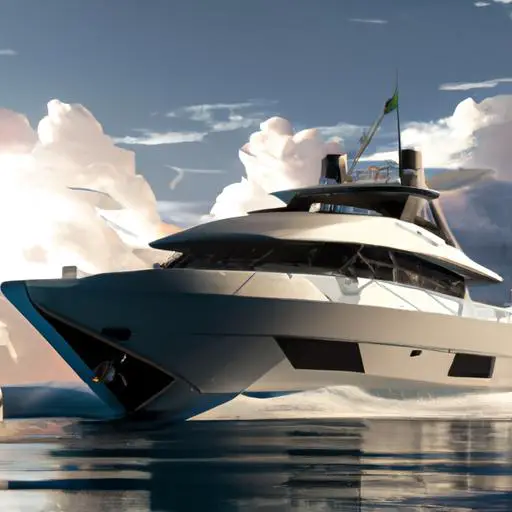
Have you ever watched a yacht race, with its colorful sails gliding across the water in a graceful dance? Have you ever wondered what it takes to participate in yacht racing? This article will take you through all you need to know about yacht racing, from the different types of yachts and races, to sailing clubs and regattas, technical knowledge and skills, safety, and the benefits of yacht racing.
We’ll also explore some of the most popular events and races.
So whether you’re an avid sailor or just curious about this exciting sport, you’ll find all the information you need here.
Table of Contents
Short Answer
Yacht racing is a competitive sport and recreational activity involving sailing yachts .
It is most popular in areas with strong maritime cultures, such as the UK, US and Australia.
Races typically involve a course that boats must follow, which can vary in length depending on the type of race.
Competitors often use advanced sailboat designs, and use tactics and strategy to try to outmaneuver their opponents in order to be the first to cross the finish line.
Types of Yachts Used in Racing
Yacht racing can be done with a wide variety of boats, from dinghies and keelboats to multihulls and offshore racing boats.
Dinghies are small, lightweight boats with a single sail and are often used in competitive racing.
Keelboats, on the other hand, are larger and heavier boats with a fixed keel and two or more sails.
Multihulls, like the popular catamaran, are boats with two or more hulls and are designed with speed and agility in mind.
Finally, offshore racing boats are designed for long-distance racing and are typically larger and more powerful than other types of yachts.
No matter what type of yacht you choose to race, they will all have common features that make them suitable for racing.
All yachts must have a mast, sails, hull and rigging, and will usually feature a deck, compass, and navigation equipment.
Additionally, racing yachts are often fitted with safety features such as life jackets, flares, and emergency radios.
Each type of yacht has its own unique characteristics, and some are better suited for certain types of racing than others.
For example, dinghies are better suited for short-course racing, while offshore racing boats are better for long-distance racing.
Additionally, keelboats and multihulls are often used for more challenging types of racing, such as distance racing or match racing.
No matter what type of yacht you choose for racing, it is important to remember that safety should always be your first priority.
Be sure to check the weather conditions before heading out and make sure that you have the proper safety equipment on board.
Additionally, it is important to get professional instruction or join a sailing club to ensure you have the necessary skills to race safely and enjoyably.
Types of Races

Yacht racing events can take place in a wide variety of forms and formats, from long-distance ocean racing to short-course inshore racing in protected bays and estuaries.
Each type of race requires different skills and equipment, and the type of race you choose to participate in will depend on your sailing experience, budget and the type of boat you have.
Long-distance ocean racing is a popular form of yacht racing, with races often taking place over several days and often involving multiple stages.
These races often have several classes of boat competing, with each boat competing in its own class.
These races may involve sailing around a set course or route, or they may be point-to-point races, where the boats sail from one point to another.
Inshore racing is the most common form of yacht racing, with races typically taking place over a few hours or a single day.
This type of racing is often conducted in protected waters, such as bays and estuaries, and generally involves shorter course lengths than ocean racing.
Inshore races may involve multiple classes of boat, or they may be one-design classes, where all boats are the same model and size.
Multi-hull racing is another popular type of yacht racing and involves boats with two or more hulls.
These boats are generally faster and more agile than monohulls, and races are often held over a short course.
These races can be highly competitive, with teams of experienced sailors vying for position and race victory.
Offshore racing is similar to ocean racing, but often involves much longer distances and more challenging conditions.
Races may take place over several days and multiple stages, and require a high level of experience and skill.
Offshore racing boats are usually specially designed for speed and agility, and may have multiple crew members on board to help manage the boat in challenging conditions.
Sailing Clubs and Regattas
Yacht racing is a popular sport around the world, with sailing clubs and regattas held in many countries.
Sailing clubs are organizations where members can come together to race, learn, and enjoy their shared passion for the sport.
Membership in a sailing club usually includes access to the clubs facilities, equipment, and training classes.
Regattas are large-scale yacht racing events, often hosted by a sailing club.
The regatta can be organized for any type of boat, from dinghys to offshore racing boats, and the races can be held over a series of days.
The goal of the regatta is to crown the winner of the overall race, or the individual class honours.
Sailing clubs and regattas are a great way for sailors of all levels to come together and compete.
They give sailors an opportunity to hone their skills, network, and make friends with other passionate sailors.
Additionally, these events are often open to the public, so they give the general public a chance to see the amazing spectacle of yacht racing up close.
If youre looking for an exciting and fun way to get involved with sailing, look no further than your local sailing club or regatta.
Technical Knowledge and Skills

Yacht racing is a sport that requires a great deal of technical knowledge and skill.
Competitors must be familiar with the physics and dynamics of sailing, including how to read the wind and manipulate their vessel to maximize speed and maneuverability.
They must also be able to understand the principles of navigation, so they can accurately plot a course and adjust it to take advantage of the prevailing wind and current conditions.
Furthermore, competitors must be able to read the weather and use that information to their advantage in the race.
Finally, competitors need to have a good understanding of the rules of the race and how to adhere to them.
Yacht racing is a complex sport with a steep learning curve, and it requires a great deal of experience and practice to master.
Safety is a key element of yacht racing, as it involves operating large vessels in often unpredictable and hazardous conditions.
All racers must be properly equipped with the appropriate safety gear, such as life jackets, flares, and a first aid kit.
It is also essential that all racers are familiar with the rules of the race, and have a good understanding of the safety protocols that must be followed in order to ensure the safety of everyone involved.
All yacht racing events must be properly insured, and there are often medical personnel on standby in case of an emergency.
Before any race, all participants must sign a waiver declaring that they understand the risks involved and accept responsibility for their own safety.
Benefits of Yacht Racing

Yacht racing is a great way to challenge yourself and take part in a thrilling sport.
It offers numerous benefits to those that participate, from improved physical health and mental well-being to an opportunity to travel and explore new places.
Whether youre a beginner or an experienced sailor, yacht racing provides an exciting and rewarding experience.
One of the main benefits of yacht racing is its impact on physical health.
It requires a great deal of strength and endurance, as the sailors must use their arms and legs to control the boats sails and rudder.
Its also a great way to get your heart rate up and improve your cardiovascular health.
Additionally, sailing is a low-impact sport, meaning theres less risk of injury than other more strenuous activities like running or cycling.
Yacht racing also has many mental benefits.
Its a great way to relax and take in the beauty of the ocean, as well as the camaraderie and excitement of competing in a team.
Additionally, it gives sailors the opportunity to put their problem-solving skills to the test, as they must think quickly and strategize in order to succeed.
Yacht racing also requires quick decision-making, which can help to improve mental acuity and develop a more acute awareness of ones surroundings.
Finally, yacht racing is a great way to explore new places and meet new people.
Races often take place in different locations around the world, meaning sailors can get a glimpse into different cultures and explore new destinations.
Additionally, yacht racing provides an opportunity to socialize with other sailors, as well as make connections in the sailing community.
Overall, yacht racing is a great way to challenge yourself and reap the numerous physical, mental, and social benefits that come with it.
With its exciting races and stunning locations, its no wonder that yacht racing has become a popular sport around the world.
Popular Events and Races
Yacht racing is an exciting and popular sport with events and races held all over the world.
From the world-famous Americas Cup to local regattas, there are races and events of all sizes and skill levels.
The Americas Cup is the oldest and most prestigious yacht race in the world, with the first race held in 1851.
Held every 3-4 years in a different location, the Americas Cup pits the worlds best sailors against each other in a battle of boat speed, tactics and teamwork.
The Rolex Sydney Hobart Yacht Race is another major race, held annually in Australia.
The race begins in Sydney Harbour and ends in the port of Hobart, Tasmania and is known for its unpredictable and challenging conditions.
The Whitbread Round the World Race (now known as The Volvo Ocean Race) is a grueling nine-month, round-the-world yacht race.
This race is one of the most challenging and dangerous races in the world.
In addition to these larger races, there are many smaller local and national regattas and races that offer an opportunity for sailors of all skill levels to compete.
From small dinghy races to larger keelboat and offshore racing events, there are plenty of opportunities to get involved in yacht racing.
Yacht racing is a fun, competitive and rewarding sport and with so many events and races available, there is sure to be something for everyone.
Whether you are a competitive sailor or just looking to have some fun on the water, yacht racing is the perfect sport for you.
Final Thoughts
Yacht racing is an exciting and challenging sport that is enjoyed by many around the world.
With a variety of yacht types, races and events to choose from, there is something for everyone.
To get started, it is important to have a good understanding of the technical skills and knowledge needed, as well as the safety protocols associated with the sport.
With the right preparation and dedication, yacht racing can be an incredibly rewarding experience.
If you’re interested in taking up this exciting sport, make sure you check out your local sailing clubs and regattas to find out what’s on offer.
James Frami
At the age of 15, he and four other friends from his neighborhood constructed their first boat. He has been sailing for almost 30 years and has a wealth of knowledge that he wants to share with others.
Recent Posts
Does Your Boat License Expire? Here's What You Need to Know
Are you a boat owner looking to stay up-to-date on your license requirements? If so, youve come to the right place! In this article, well cover everything you need to know about boat license...
How to Put Skins on Your Boat in Sea of Thieves? (Complete Guide)
There is a unique sense of pride and accomplishment when you show off a boat you customized to your exact specifications. With Sea of Thieves, you can customize your boat to make it look like your...
The Ultimate Guide to Yacht Racing Rules and Regulations
- by yachtman
- September 6, 2023 August 26, 2023

Yacht racing is an exciting sport! It requires skill, accuracy, and knowledge of rules . These regulations guarantee fair play and safety. To really appreciate the activity, you must understand the regulations.
At first, navigating the rules may seem intimidating. But breaking them down into chunks makes it easier. One important point is the hierarchy between boats. It shows which boat should give way in different situations.
It’s also important to know the race signals. They communicate crucial info, such as race starts and course changes. Participants and spectators need to know these.
Stay updated on any rule changes or amendments issued by World Sailing . They refine existing regulations and add new ones to improve the sport. Knowing the latest rules will give you confidence.
Finally, read case studies of past incidents/disputes during yacht races. This way you can learn from mistakes and be ready for unexpected situations.
Understanding the Basic Rules of Yacht Racing
Understanding the Fundamental Regulations of Yacht Racing
Yacht racing involves a set of basic rules and regulations that govern the competition. These rules are essential for ensuring fair play and safety on the water. To help you understand the fundamental regulations of yacht racing, here is a concise 5-step guide:
- Start Line Procedure: Before the race begins, all yachts must line up at the designated starting line. This line is typically marked by buoys or flags, and competitors must position themselves according to the rules specified by the race committee.
- Right of Way: Yacht racing follows a set of right-of-way rules that determine which yacht has precedence in certain situations. For example, a yacht on a starboard tack (wind coming from the right side) usually has right of way over a yacht on a port tack (wind coming from the left side).
- Mark Roundings: Yacht courses often include marks, such as buoys or flags, that competitors must round during the race. The rules specify how yachts should approach and pass these marks to ensure fair competition and prevent collisions.
- Protests and Penalties: If a competitor believes that another yacht has violated the rules, they can file a protest with the race committee. The committee will then investigate the incident and may impose penalties on the offending yacht if the protest is upheld.
- Finishing Line: The race concludes at the finishing line, which is typically marked by buoys or flags. Yachts must pass this line in the correct direction and often have to radio or signal their finish time to the race committee.
These steps outline the key elements of understanding the fundamental regulations of yacht racing. It’s important to familiarize yourself with these rules to ensure a safe and fair competition.
Pro Tip: Before participating in a yacht race, take the time to thoroughly study and understand the specific rules and regulations for that event. This will help you navigate the race effectively and avoid unnecessary penalties.
Get ready to navigate through a sea of confusing jargon as we dive into the essential terminology of yacht racing – it’s like learning a new language, but with more wind in your sails.
Essential Terminology in Yacht Racing
Yacht racing requires a unique language to be mastered by all sailors. Knowing these terms is essential for successful communication and cooperation during races.
Check out some of the key vocab words used in yacht racing:
Plus, other crucial terms like “luffing” (sail fluttering due to lack of wind), “tiller” (lever for steering boat) and “hull speed” (maximum speed a boat can reach in water).
Pro Tip: Get to know these essential yacht racing terms to up your enjoyment of this exciting sport!
Key Rules and Regulations for Yacht Racing
Yacht Racing: A Comprehensive Guide to Rules and Regulations
The rules and regulations governing yacht racing are crucial for ensuring fair and competitive events. Understanding these guidelines is essential for both participants and organizers to guarantee a level playing field and maintain the integrity of the sport. Below, we have compiled a table highlighting key rules and regulations for yacht racing in an easily accessible format.
Key Rules and Regulations for Yacht Racing:
These rules and regulations provide a framework that allows for fair competition and keeps participants safe. However, it is important to note that each race may have additional guidelines specific to the event or location, and participants should familiarize themselves with these unique details.
One such incident in the world of yacht racing involved a team that, due to a technical malfunction, found themselves adrift just moments after the race had begun. With quick thinking and teamwork, they managed to rectify the issue, rejoin the race, and ultimately finished in an impressive third place. This story illustrates the resilience and determination required in yacht racing, where unforeseen challenges can arise at any moment.
Yacht racing rules and regulations are comprehensive and necessary for maintaining fairness and safety. By adhering to these guidelines and being prepared for unexpected circumstances, participants can fully engage in the thrilling and competitive world of yacht racing.
Navigating through the racing course is like playing chess, except the pieces are yachts and the stakes are higher – imagine the drama when someone accidentally knocks over the queen!
Racing Course and Markings
Ahoy, mateys! Hop on board for a wild race on the high seas! It’s time to learn about the racing course : a carefully crafted area for a thrilling competition . Keep your eyes peeled for the start line – it marks the beginning of the race. Then, look out for the turn marks ; these designated points show where sailors must change direction. Finally, the finish line indicates the end of the race.
If ye want to be the best sailor, ye must understand these course and marking details. It’s essential for a successful yacht racing experience, so don’t miss out! Time to set sail and make your mark in the world of yacht racing.
Right of Way and Collision Avoidance
In yacht racing, we must pay close attention to the right of way and collision avoidance. Following specific rules and regulations is key to ensuring a fair race and preventing accidents.
Let’s look at the key rules related to right of way and collision avoidance in yacht racing:
These rules are just the beginning of the comprehensive regulations. Now, let’s look at a unique detail. In some cases, when two yachts on different tacks approach a mark, they may have equal rights. It’s important for skippers to communicate and coordinate to avoid possible collisions.
To show the importance of following these rules, here’s a story. During a competitive race, two yachts were nearing a turning point. The skipper of one boat did not yield the right of way, which violated rule number 10. Both boats were damaged and their chances of winning were ruined. This serves as a reminder that even small errors can have big consequences in yacht racing.
Starting and Finishing Procedures
Before the yacht race, boats must gather in the starting area. Skippers must steer clear of any collisions or rule-breaking.
Next comes the starting sequence – with flags or sound signals showing the time until the race starts. Skippers must pay close attention to them.
Once the final signal is given, the yachts race across the start line. Skippers must judge their entry properly to get an advantage and stay within the racing rules.
At the end of the race, the finish line is reached. Skippers should navigate and strategize here to cross it fast while following regulations.
Each race may have different start and finish procedures. Participants must read instructions from race organizers to stick to all rules.
The America’s Cup is one of the oldest sailing competitions. It began in 1851 around the Isle of Wight. It’s a big international event now, with teams competing every few years for the trophy.
Safety Guidelines for Yacht Racing
Safety Measures for Yacht Racing
Yacht racing events prioritize the safety of participants to prevent accidents and mishaps. Here are essential safety guidelines for yacht racing:
- Adhere to proper safety equipment regulations, including life jackets and distress signaling devices.
- Ensure all crew members are familiar with emergency procedures and know the location of safety equipment on the yacht.
- Maintain clear communication channels, using appropriate radio frequencies or signals during the race.
- Regularly inspect and maintain all equipment on board to ensure it is in proper working condition.
- Monitor weather conditions and take necessary precautions, such as altering course or seeking shelter in case of inclement weather.
- Adhere to collision-avoidance rules, maintaining a safe distance from other yachts and objects in the water.
It is important to stay up to date with the latest safety guidelines and regulations in the yacht racing community to ensure the well-being of all participants.
Yacht Racing Safety History:
Throughout the history of yacht racing, safety measures have evolved to enhance participant protection. Collaborations with maritime organizations and advances in technology have led to the development of comprehensive safety regulations and equipment. The efforts have significantly reduced the number of accidents and increased the safety of yacht racing as a sport.
Yacht racing may be a high-stakes sport, but remember, not everyone can pull off the bold fashion statement that is a life jacket.
Personal Safety Equipment
To ensure success in yacht races, it’s important to prioritize safety! All sailors should wear a well-fitted life jacket at all times to provide buoyancy aid. Personal locator beacons transmit distress signals if someone falls overboard. A harness with a tether will keep sailors attached to the boat. Protective clothing, such as gloves, boots and waterproof gear, guards against hypothermia and injuries. Reliable communication devices are necessary for crew members to stay in touch. Also, inspect all safety equipment regularly.
To further enhance safety, organizers can do regular safety drills. Employing support vessels is key for immediate response. Establishing clear communication protocols allows for effective coordination. By following these suggestions, yacht racers can reduce risks and maximize safety levels. Safety equipment and measures are essential elements for successful yacht races!
Safety Precautions on the Water
Yacht racing can be thrilling – but don’t forget to stay safe! Here are some essential tips:
- Always wear a life jacket : No matter how experienced you are, you can never be too careful.
- Check weather conditions: Sudden storms or high winds can make racing conditions dangerous.
- Create a communication plan: Make sure everyone in your crew is informed of any hazards or changes in course.
Plus, don’t forget to research local rules and regulations. Safety should always come first! So, gear up and get ready for a thrilling experience on the water. Enjoy the fun and camaraderie of yacht racing – just remember to stay safe!
Common Penalties and Protest Procedures
Yacht racing penalties and protest procedures involve various rules and regulations that must be followed. To ensure fair competition and resolve any disputes, there are consequences for violations. Here is a breakdown of the common penalties and the procedures for lodging a protest:
It’s important to note that each yacht race may have its specific procedures and penalties, so it’s crucial for participants to familiarize themselves with the rules beforehand. This ensures a fair and competitive environment for all racers.
Understanding the common penalties and protest procedures is vital for yacht racers to navigate the intricacies of the sport. By abiding by the rules and properly addressing any issues through the protest process, participants can ensure a level playing field, maintaining the integrity and fairness of yacht racing.
Don’t miss out on the opportunity to compete fairly and enjoy the thrilling experience of yacht racing. Familiarize yourself with the penalties and procedures to avoid any confusion or missed chances. Stay informed and make the most of your yacht racing journey.
“Being disqualified in yacht racing is like being told you’ve won the lottery, but then realizing it’s April Fool’s Day.”
Types of Penalties in Yacht Racing
Penalties in yacht racing are necessary to ensure fairness and compliance with the rules. These penalties act as a deterrent against any wrongdoings or rule-breaking, keeping the sport’s integrity intact.
A descriptive table can help us understand the various types of penalties in yacht racing:
These penalties have serious consequences, which act as a warning to sailors not to take any unfair advantages or act dangerously. Knowing these penalties is essential for competing in yacht racing.
Penalties have been part of yacht racing since the beginning. They were put in place to maintain order in races and create a fair playing field. Over time, these penalties have been adapted to fit the changing dynamics of the sport.
A good grasp of the penalties in yacht racing helps competitors perform better on the water. It also promotes sportsmanship and upholds the spirit of fair play in this exciting discipline.
Initiating and Resolving Protests
- Pinpoint the issue .
- Be sure it follows the rules.
- Gather data, facts, and material.
- Create a clear and concise statement.
- Submit the complaint to the right body.
- Talk to the parties.
- Look for a fair outcome through negotiation or mediation.
- Pay attention to deadlines.
- Respect protocols.
- Take charge and protect your rights.
- Act now and make sure your voice is heard!
Strategies and Tactics in Yacht Racing
Strategies and tactics are vital in the world of yacht racing. Understanding the nuances of this sport can make a significant difference in performance. Here, we explore some essential strategies and tactics employed by skilled yacht racers.
In yacht racing, there are unique details to consider, such as utilizing current knowledge to select the best racing route. Additionally, understanding the impact of tidal flows and currents can help racers make more informed decisions during a race.
To become a successful yacht racer, it is crucial to study and practice these strategies and tactics diligently. By mastering these techniques, one can maximize their chances of success and stay ahead of the competition.
Don’t miss out on the opportunity to excel in yacht racing. Enhance your skills by incorporating these strategies and tactics into your training regimen. Start implementing them today and take a step closer to becoming a champion on the water.
Positioning and Sail Trim Techniques: Where you’re positioned on the yacht may determine if you’re the first to cross the finish line or the first to take an unexpected dip in the water.
Positioning and Sail Trim Techniques
Table of Positioning & Sail Trim Techniques:
Plus, spinnaker handling has methods like gybing – shifting the spinnaker from one side to the other when sailing downwind. Helm balance is critical to good steering during racing.
Sir Ben Ainslie , a great sailor, said mastering positioning and sail trim techniques is the difference between successful racers and those who have difficulty competing in yacht racing events.
Reading Wind and Weather Conditions
Wind and weather conditions are essential for yacht racing. They let sailors make wise decisions, plan well, and have an edge. Here’s what to know about understanding these conditions:
- Observation – Skilled sailors look closely at wind direction, strength, and patterns. They keep an eye on clouds, waves, and temperature changes. By doing this, they can predict future weather shifts.
- Analyzing – Racers check forecasts, barometric readings, and sea temps. They combine this with their observations to get a clear picture of present and future winds.
- Adaptability – Successful sailors change their strategies with the changing conditions. They often reassess their tactics during the race, to take advantage of good winds or limit bad weather.
Yacht racers also think about local geography, tidal currents, and nearby landforms. This helps them sail complex courses accurately.
Sarah, a seasoned sailor , showed her skill in reading wind and weather conditions. Though she started in a difficult spot due to unfavorable winds, she noticed slight changes in the breeze. She used this knowledge to take risks while maneuvering her boat. Making smart decisions based on changing conditions, Sarah won in speed and tactics.
Reading wind and weather conditions is essential for yacht racers. With keen observation, data analysis, and flexibility, sailors can do well on the water. So, if you’re joining a regatta or a sailing trip, mastering this art is important for success.
Resources and Additional Information
The following section provides additional resources and information related to yacht racing rules and regulations. These resources can be helpful for further understanding and clarifying the various aspects of the sport.
- Visit reputable online platforms such as yacht racing associations, federations, and governing bodies for comprehensive rules and regulations.
- Explore websites that provide educational materials, instructional videos, and interactive tools to enhance your knowledge.
- Delve into specialized publications authored by renowned sailors, coaches, and officials. These books cover a wide range of topics, including racing tactics, strategies, and the intricacies of specific rules.
- Engage with fellow enthusiasts, experienced sailors, and professionals on sailing forums and online communities. These platforms offer valuable insights, practical tips, and discussions on various rules and racing scenarios.
It is essential to stay updated with the latest developments and amendments in the rules to ensure compliance and maintain fair competition. Continuously seek new sources of information to enhance your understanding of yacht racing regulations and improve your performance on the water.
Yacht racing rules and regulations have evolved over time to ensure fairness and safety in the sport. The sport’s history is replete with instances of rule modifications and adaptations to address emerging challenges and technological advancements. A testament to the sailing community’s commitment to maintaining a level playing field and promoting the spirit of competition.
Get ready to navigate through a sea of paperwork and bureaucracy as we dive into the world of associations and governing bodies—where bold sailors become masters of red tape.
Associations and Governing Bodies
Associations and Governing Bodies are vital for managing various industries. We present an overview of some important associations and governing bodies relevant to distinct sectors. To make it easier to understand, let’s list out the information in a table:
This table shows some examples of associations and governing bodies from many areas. Each association has a major role in setting up standards, creating rules, and promoting collaboration within its industry.
It’s worth noting that there are other associations and governing bodies in other places, each doing their part to foster growth and uphold ethical practices. These organizations often provide materials such as industry-particular research, networking chances, and professional growth programs.
Pro Tip: To stay up to date with the most recent developments in your field, participate actively in related associations or governing bodies. This can help you stay ahead and build valuable connections within your sector.
Recommended Reading and Online Sources
Unlock helpful resources to boost your knowledge! Try these ideas:
- Read up on industry news with Harvard Business Review .
- Learn new skills with Coursera or Udemy courses.
- Check out free materials from universities like MIT OpenCourseWare .
- Listen to inspiring TED Talks .
- Get answers in online forums and communities like Stack Overflow .
Go deeper with niche topics. Try IEEE Xplore or JSTOR databases for in-depth research. Master tough concepts with interactive learning platforms like Khan Academy .
Pro Tip: Don’t just consume info, engage with it. Take notes, join discussions, and apply what you learn.
Frequently Asked Questions
What is yacht racing?
Yacht racing is a competitive sport where sailboats or yachts compete against each other in a designated course to determine the fastest or most skillful boat.
What are the basic rules of yacht racing?
The basic rules of yacht racing include giving way to other boats, avoiding collisions, understanding right of way, and following course boundaries. Each race may also have specific rules and regulations.
How are yacht racing courses determined?
Yacht racing courses are determined by race organizers and can vary depending on the type of race and the location. Courses typically include marks, buoys, or specific geographic points that boats must navigate around.
What is the role of a race committee in yacht racing?
The race committee is responsible for organizing and overseeing yacht races. They set the course, establish starting and finishing lines, enforce rules, and ensure fair competition.
Do yacht racing rules change for different types of boats?
Yes, yacht racing rules can vary slightly depending on the class or type of boat. Different classes may have specific regulations regarding sail dimensions, equipment, or crew size.
How can I learn more about yacht racing rules and regulations?
To learn more about yacht racing rules and regulations, you can refer to official rulebooks such as the Racing Rules of Sailing published by World Sailing. You can also seek guidance from experienced sailors or enroll in sailing courses.
Leave a Reply Cancel reply
Your email address will not be published. Required fields are marked *
Save my name, email, and website in this browser for the next time I comment.
- Motorcycles
- Car of the Month
- Destinations
- Men’s Fashion
- Watch Collector
- Art & Collectibles
- Vacation Homes
- Celebrity Homes
- New Construction
- Home Design
- Electronics
- Fine Dining
- Costa Palmas
- L’Atelier
- Reynolds Lake Oconee
- Scott Dunn Travel
- Wilson Audio
- 672 Wine Club
- Sports & Leisure
- Health & Wellness
- Best of the Best
- The Ultimate Gift Guide
- Here’s What It’s Like to Race in a Regatta—and How You Can Join a Crew Yourself
The most glamorous regattas in the Med and Caribbean need crew, from veteran sailors to newbies. We did our first Caribbean race in Antigua.
Helen iatrou, helen iatrou's most recent stories.
- How Fashion Icon Leonardo Ferragamo Turned Nautor Swan Into a Sailing Powerhouse
- Share This Article

Related Stories
This new 62-foot solar-electric catamaran is topped by a luxe skylounge.
- This Ultra-Rare 1991 Jaguar With Only 78 Miles Is Now up for Grabs
- This Rare 1964 Race Car Was Chevy’s Response to the Shelby Cobra. It Could Be Yours for $2 Million.
In the Caribbean sailing capital of Antigua, Ondeck Sailing offers crew positions on the 65-foot performance yacht Spirit of Juno for international regattas staged in the region. Individual packages on what are known as head boats include a skipper and mate, training, and lunch when racing. There are even occasional opportunities to crew when the yacht is being delivered from its home port to the racing destination.

“We always have a good mix of experienced racers and beginners,” says Spirit of Juno ’s skipper David Hanks. “It works well because beginners want to work hard and learn, while those with experience are always happy to share knowledge.”
Rates for Caribbean regattas, where the vibe tends to be laid back, start at around $1,925. Whole boat charters are another option, particularly among crews who train together at home as well as corporate teams. The Caribbean racing season begins in early January, so now is a good time to check crew place availability and lock in your spot.
At this year’s Antigua Sailing Week , a competitive yet fun-loving race held in April-May, I clambered aboard Spirit of Juno and discovered I was one of just two females of an 18-strong crew. Skipper Hanks was the final word when it came to anything on Juno , but first mate Michelle Franklin set the rhythm for sail changes such as flaking the massive black jib, barking, “Pinch. Pull! Pinch. Pull!” as a blood-red spinnaker billowed above, contrasting with vivid blue skies.
You’re not mollycoddled during the week and are expected to act as any professional crew member would. Spirit of Juno ’s oversize winches intimidated me at first but I seized the opportunity to try varied roles, including jib trimmer, and was impressed at the balance of dynamics with the rig. In another position as the below-deck “squirrel,” I bear-hugged and hauled in the 3,191-square-foot A2 spinnaker, making sure to keep the weighty hardware away from my face as fellow crew propelled the crimson sail up through the companionway.
But flaking the jib wasn’t the toughest job on the Millennium Farr 65, designed and built in 1999 for the first Millennium Round the World Race. That prize went to the pedestal grinder, which tested the aerobic fitness of the executives, and routinely spat them out during the course of the regatta.
By the end of the week, while not exactly ready for the America’s Cup, we were in a racing groove and had developed a good camaraderie. It was one of the most enjoyable, physical, and powerful Caribbean vacations I’ve ever had.
Next year’s Caribbean racing calendar kicks off with Grenada Sailing Week on January 28 and the RORC Caribbean 600 on February 19, followed by the St Maarten Heineken Regatta on February 29. But it’s not just about the racing. Rum-fueled parties and reggae are critical to the success of the West Indies regatta concoction.

In March, the superyacht-oriented St Barths Bucket Regatta , whose roots date to a 1986 race on Nantucket Sound, premieres a 100-foot class for performance-oriented sloops. April sees the island nation host the newer yet equally swanky Les Voiles de St Barth .
More experienced sailors might opt for the Rolex Middle Sea Race , one of the Med’s toughest challenges, commencing October 21. Departing from Malta’s Grand Harbor, the 606 nautical-mile offshore course heads north to Sicily’s eastern coast, through the demanding Strait of Messina and past the Aeolian and Egadi islands, with views of active volcanoes Mt. Etna and Stromboli on the way. UK-based Sail Racing Academy offers a nine-day package starting at $2,312.
Late-season racing in southern Europe means cooler temperatures and rougher sea states, so come prepared with the appropriate gear. And, in contrast to the Caribbean, some Med regattas dictate a dress code for dinner and invite-only owners’ parties at the host race club. But they’re certainly just as enjoyable.
More Marine

This New 131-Foot Electric Catamaran Can Cruise the High Seas Sans Emissions

Asia Just Got a New Luxury Airliner. Here’s What It’s Like Onboard.

David and Victoria Beckham Spiced Up Their Family Easter on This 130-Foot Superyacht

Culinary Masters 2024
MAY 17 - 19 Join us for extraordinary meals from the nation’s brightest culinary minds.
Give the Gift of Luxury
Latest Galleries in Marine

The 11 Best Water Toys for the High Seas, From Electric Surfboards to Personal Subs

Unica 40 in Photos
More from our brands, sunset boulevard’s kiosk-o-thèque is a newsstand meets cultural hub, final four coaches find experience pays off: data viz, neon releases pamela adlon’s ‘babes’ trailer – film news in brief, early kaws painting apparently owned by fashion mogul marc eckō to hit the auction block at sotheby’s, this best-selling under-desk walking pad is over $100 off on amazon today.
Rolex Sydney Hobart Yacht Race 2023

Rolex Sydney Hobart Yacht Race
- Corinthian - IRC
- Corinthian - PHS
- 2-Handed IRC
- 2-Handed PHS
- 2-Handed Line Honours
- Line Honours
Sailing Positions

Positioning in sailing has to do with where your sail is facing and how it is being affected by the wind. In order to keep direction and speed, someone must be paying attention to the speed and direction of the wind and adjusting the sail accordingly. Even a slight miscalculation could be disastrous in sailing. Below, we will take a look at the different positions, duties, and jobs one can have on a sailboat.
Table of Contents
Sailing duties, tactician/trimmer.
The people who work on a ship can differ depending on the type of ship. The crew on a crew boat consists of eight people all sitting in a row on the boat. This is different from the crew on a yacht, which includes spinnakers, helmsman, bowmen, and more. Though their duties are different, the objective of both sets of crew is to work with the wind and tides to get to the next destination as quickly and easily as possible. With a yacht, this means dealing with a sail while a crew boat needs to paddle.
While the titles and roles of the various crew members on a sailing boat may vary depending on the league, race, and type of vessel, here are a few common positions you will hear of in sailing:
A sailing tactician, also sometimes referred to as a “trimmer,” checks the wind shifts and adjusts the course of the boat accordingly . In races, their job is to guide the boat and the other crew members along the racecourse in order to get them to the finish line as fast as possible. They must take into account the angle of the sail, wind, and tide and then choose which side of the line to favor. Even a small miscalculation by a tactician can mean the end of the race for a whole team.
Trimmers are often referred to by whichever sail they are in charge of: for instance, the trimmer who works the mainsail will be referred to as the “mainsail trimmer,” while a trimmer who works the foresail will be called a “foresail trimmer.” Trimmers may also be referred to by where on the boat they are stationed (e.g. “port trimmer” and “starboard trimmer”).
A driver, also sometimes referred to as a “helmsman," keeps the boat pointed in the direction that the tactician suggests. As their name suggests, the act of keeping the point pointed in the best possible direction is known as “driving.” Drivers are also responsible for making sure a maximum safe speed is maintained throughout the duration of the race.
A mastman is the main crewmember who assists with the quick hoist of a sail during maneuvers. This sailor is typically the strongest member of the crew, because they must be able to easily move the sail during strong wind shifts. A mastman will work closely with the bowman and keep in communication with the pitman and captain.
The understudy, also known as the second officer, is the second-in-command and helps manage the crew. While the tactician or first officer is in charge of navigating the boat in the correct direction, the understudy helps manage the bridge team and makes sure the deck team is acting in accordance with the first officer’s orders. Understudies will also learn the jobs of the mastman, bowman, and pitman to fill in where necessary. Understudies are most often seen on large yachts and superyachts.
The bowman is the crew member that is in charge of the sail . This is a very important job, because once a tactician signals, a bowman must be ready immediately to angle the sail or raise/drop it at a moment’s notice. If a sail is not raised, dropped, or moved in time this can mean a drastic drift off course.
The pitman is similarly-named (and has a similar function to) the pit crew in many automobile racing sports. On a sailboat, however, the pit crew on a sailing boat is often just one person. The pitman is responsible for resolving any in-race issues with the boat that could cause a disaster or a loss while the race is underway.
Common things that the pitman may have to deal with are unexpected knots or entanglements in the rigging and ropes of the vessel, which can make it hard to raise or shift the sails as needed. Pitmen will also prefeed sheets and “run the tapes” on sails that are off the breeze to make sure that they do not get tangled. The pitman is also commonly charged with raising and lowering sails when the boat is rounding a mark.
What are the positions in sailing?
In sailing, position titles can vary based on what type of sailing you are performing, but the most common positions are tacticians/trimmers, a driver, a mastman, an understudy, a bowman, and a pitman. These positions divide up the various roles and duties on a sailboat, including guiding the ship, raising and lowering sails, undoing tangles and knots, steering, and calling maneuvers.
What is a sailing team called?
A sailing team’s name can differ among boat types. Normally they are called a “crew,” specifically on crew boats where the members are very close together and are forced to work as a team more than any other boat. Teams in a competition can also just be called “sailing teams” at international competitive events such as the Olympics.
What are the positions on a yacht?
Yacht crew positions include pitman, mainsheet trimmer, bowman, helmsman, spinnaker guy trimmer, and spinnaker sheet trimmer. The crew positions on a yacht are more complicated than that of a crew boat or a smaller sailing boat. While there are only six members, as compared to eight on a crew boat, they have more complicated responsibilities dealing with the mainsail as well as other factors involved in a yacht.
Pages Related to Sailing Positions
- Sailing Basic Rules For Kids
- Top 10 Sailing Movies
- Sailing Basics
- Top 10 Sailing Video Games
- Sailing Equipment List
- What Are The Rules Of Sailing?
Yacht Crew Wanted
Amateur and professional yacht crewing positions available worldwide, from daysailing to transocean for all experience levels.
Search sailing opportunities
For yacht crew
It’s free for everyone to browse though all of our current sailing opportunities. Become a member to contact yacht owners and join their crew.

For yacht owners
Registration and posting is free if you are looking for a skipper or crew. Find amateur and professional crew for short or long term voyages.
Featured sailing opportunities
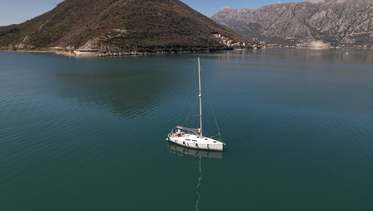
Americas Cup (AC37) Barcelona 2024
Boat type: Hanse 385
Location: Tivat Montenegro
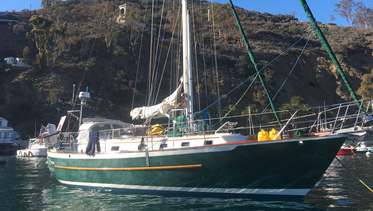
PS40 MX to Papua New Guinea by early '24
Boat type: Cutter Rig Bluewater Passage Maker
Location: Puerto Vallarta, Mexico
Coastal yacht cruising
Professional sailing jobs, ocean sailing voyages, yacht delivery crew, worldwide opportunities, varied vessel types, all experience levels, mile building voyages, short notice sailing, environmental & wildlife vessels, we are recommended by.

Crewseekers notices
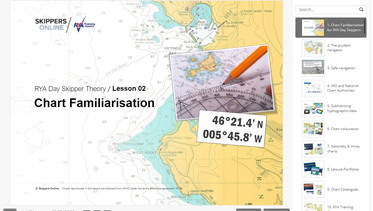
Day Skipper & Yachtmaster theory courses - 20% off
Online RYA theory courses with a great discount courtesy of Crewseekers.
Skipper for Private Catamaran Charters in Malta
More information

Training for a career at sea?
What qualifications do you need to get the jobs you want?
we love sailing as much as you do
Crewseekers is run by experienced, professional sailors offering a friendly and helpful service to yacht crew and owners. We are the original yacht crew introduction agency – established for over 25 years, offering amateur and professional sailing opportunities throughout the world.
- Yachting Monthly
- Digital edition

The 2023-24 Ocean Globe Race
- November 2, 2023
In the spirit of the Whitbread, 14 yachts from 23 different countries set off from Cowes to compete in The Ocean Globe Race 2023-24

Hundreds of spectator boats cheered the start of the Ocean Globe Race on Sunday 10 September, as 14 iconic yachts raced through the line off Cowes, at the start of a 27,000-mile global circumnavigation in the spirit of the 1973 Whitbread Round the World Race.
A flotilla of well-wishers, including Britain’s largest working steamship, Shieldhall, waved and clapped the fleet to the starting line opposite the Royal Yacht Squadron on the Isle of Wight, where Sir Chay Blyth, a fellow circumnavigator, fired the starting gun.
The race celebrates the 50th anniversary of the first Whitbread Round the World Race, which means taking on the world’s toughest oceans without modern technology, using no computers, satellites, GPS, or high-tech materials for navigational aids.
The Whitbread Round the World Race started from Portsmouth in 1973 following in the route of the great Clipper ships. It was the first fully crewed global yacht race, capturing the heart of the British public, and the forerunner of the Volvo Ocean Race and the Ocean Race.
Translated 9 was previously raced as ADC Accutrac by British skipper Clare Francis, who took fifth place in the 1977 Whitbread Round the World Race. Photo: Studio Borlenghi/Luca Butto
Explorer, AU (28) was first over the line in light winds, followed by Spirit of Helsinki, FI (71) and Translated 9, IT (09). The only British entry, Maiden, GB (03) was on the other side of the line in fourth position. This was only the start, however, and there were still 27,000 miles to go.
‘What an amazing sight to witness 14 teams recreating history, stepping back in time and setting off around the world on a grand adventure in the spirit of the original 1973 Whitbread,’ said Don McIntyre, Ocean Globe Race founder and sponsor.
Seven of the boats competing have taken part in one or more of the past Whitbread races: Maiden, Pen Duick VI, FR (14), Esprit d’Équipe, FR (85), Neptune, FR (56), Outlaw, AU, (08) and Translated 9, IT (09), formerly ADC Accutrac skippered to 5th place by Clare Francis in the 1977 Whitbread.

A wave from the crew of L’Esprit d’Equipe. Photo: Studio Borlenghi/Luca Butto
Father’s legacy
It was an emotional sight to see skipper Marie Tabarly at the helm of Pen Duick VI following the same route as her father 50 years ago on the same yacht. Pen Duick VI was dismasted twice in the 1973 Whitbread when skippered by Marie’s father, Éric Tabarly.
One of the most notable teams is the Farr 58, Maiden. In 1990, Tracy Edwards, now MBE, triumphantly brought home the first ever all-female Whitbread crew onboard Maiden to Ocean Village Marina, Southampton. At the time, it was estimated that almost 50,000 people came to witness this momentous event, which helped to turn the tide on women’s participation in sailing.
In this edition, Maiden again set sail with an all-female crew under skipper Heather Thomas, firstly to win, but also to highlight the work of the Maiden Factor Foundation, a charity started by Tracy to support communities to enable girls into education, helping them to reach their full potential and create better futures for all.

L’Esprit d’Equipe at the start of the race. Photo: Studio Borlenghi/Luca Butto
Helicopter evacuation
A week after the start, an injured crewman, Stéphane Raguenes, from the French yacht Triana (66) was evacuated by long-range helicopter in a dramatic rescue 225 miles from the island of Madeira. Stéphane had slipped on deck in heavy weather causing a severe laceration to the back of his leg.
At the time, 4m waves made a transfer to a nearby container ship impossible and skipper Jean d’Arthuys planned to continue to Madeira to seek medical treatment.
But D’Arthuys raised the alert to Code Red the following morning and requested a helicopter evacuation after Stéphane’s condition deteriorated overnight. The long-range rescue was carried out later that day and Raguenes was successfully helicoptered to hospital in Madeira.
The same day, another entrant Godspeed, (01) USA, contacted OGR race control reporting their boom had developed a six-inch crack in the middle following a few days of heavy weather. The team has now diverted to Lisbon to begin repairs.
French rivals L’Esprit d’Equipe and Evrika passing the Needles en route to Cape Town. Photo: Studio Borlenghi/Luca Butto
Crew diversity
The 218 sailors taking part in the race – 65 women and 153 men ranging from 17 to 73 years in age – come from 23 different countries and include: 96 crew from France, 31 from Finland, 18 from the UK, 18 from the US, 11 from Italy and six from South Africa. The diverse crews taking part are united by a passion to live a life less ordinary.
This OGR is dominated by the French; five of the yachts, Triana (skipper Jean d’Arthuys), Evrika (skipper Dominique Dubois), Neptune (Tanneguy Raffray), Pen Duick VI (Marie Tabarly), and former winner L’Esprit D’Equipe (Lionel Regnier) sail under the French flag.
With so much emphasis on youth – invigorating though it is, we do live in an ageing society. There are many sailors who will warm to surgeon Tanneguy Raffray’s initiative for including Bertrand Delhom among his crew.
Delhom has had many medical misfortunes throughout his life, including a partial amputation of his foot which has left chronic residual pain. He is no stranger to depression. Raffray describes Delhom’s diagnosis with Parkinson’s Disease as ‘the last knife’. Delhom volunteers as an instructor for other disabled sailors and asked Raffray to accept him on board Neptune to give hope to others. They have worked together on a programme of physical and psychological exercises to strengthen Delhom for the voyage and have also made various modifications to Neptune to provide additional hand holds.
Raffray will write about the experience for both the medical and popular press when they return.
The oldest OGR entrant, Campbell Mackie, 73, mentoring Spirit of Adelaide’s youngest crew member, India Syms, 18. Photo: Studio Borlenghi/Luca Butto
Strong British contingent
Though Maiden is the UK’s only entrant, there are other British sailors scattered through the fleet.
Some have signed up to sail a single leg, others are ‘rounders’. Simon Curwen, who took line honours in the recent Golden Globe Race, is sailing the first two legs on board the Italian yacht Translated 9. He sounds slightly surprised to be there and agrees that this is a significant departure from his usual solo racing.
The invitation to join Translated 9 came so soon after the GGR last year that Curwen had turned it down. His wife Clare encouraged him to think again. He is sailing with Vittorio Malingri, whose father and uncle have both done the race, and who is joined by his son Nico. Owner Marco Trombetti is the co-skipper, and his wife and business partner, Isabelle Audrieu, will sail with them for a leg.

A hive of activity and excitement aboard Pen Duick VI as the crew get her off to a good start with Marie Tabarly at the helm. Photo: Studio Borlenghi/Luca Butto
Jill Comber, sailing the whole race on the Australian yacht Explorer, has a hunch that her skills as a CEO of a successful company will prove transferable to challenges of life on board. She took up sailing as a single mother looking for something she and her nine-year-old son could do together. He’s now an adult, seeking his own adventures.
Since selling her company Jill has done as much ocean sailing as she can and sees the OGR as a way to accelerate her learning about herself. ‘It feels like throwing my life up into the air and wondering where it will come down.’ Her role on board is crew co-ordinator, something very necessary as Explorer has crew joining and leaving at every stage. Some they haven’t even met yet.
Terry Kavanagh, the sole Irishman in the OGR, sailing on Explorer as first mate, agrees with Jill about business skills being transferable. He’s still part way through a slow circumnavigation with his wife Jac and is an unexpected convert to racing. This January they took part in the Atlantic Rally for Cruisers. However, Terry was inspired by Don McIntyre’s concept of the OGR and, as Jac had already raced round the world via the Clipper fleet, they agreed to leave their yacht in the West Indies and sign on. While Terry sails this race with skipper Mark ‘Captain Coconut’ Sinclair, Jac has joined the shore-based team, managing PR.
Maiden’s all-female crew range in age from age 18 to 42, with skipper, Heather Thomas, 26 (fifth from left), at the helm for the OGR. Photo: Studio Borlenghi/Luca Butto
Good to see the Brits
Tom Napper, first mate on Pen Duick VI, has found that the best way to have a career in sailing is to be at the right place and jump on opportunities. He’s a sailor and rigger from Cornwall who started his career afloat when he was two. His mother, a single parent and district midwife, often needed people to look after her hyperactive child and was relieved to discover that the motion of a boat helped him sleep.
He first met skipper Marie Tabarly when racing in Monaco and kept in touch until a message arrived last year, ‘We need to go and drink coffee.’ Tom joined Pen Duick VI in November and has found his French crewmates welcoming – though Sir Chay Blyth muttered that it was ‘Good to see a Brit on board,’ Aurora Sillars (23) is the youngest member on board the South African entry Sterna. This is owned by a new adventure sailing company, Allspice Yachting, which hopes to use the race to gain recognition and also undertake environmentally useful projects.
Her owner, Dr Gerrit Louw, is a former academic specialising in geo-informatics, and the boat’s main sponsor is Inclusive Carbon Standard, which aims to reduce the cost of carbon credits and supply food and trees for Africa. Aurora’s personal project is plankton collection. Sterna was the first yacht in the fleet to achieve the Green Card for passing all safety checks. She also has the lowest handicap.

Maiden’s all-female crew are likely to maintain resilience. Photo: Studio Borlenghi/Luca Butto
Lucy Frost on the Australian yacht Outlaw is clear about her motivation – ‘Sailing puts a smile on my face.’ She began sailing when IVF failed and it was clear that she could never have children. ‘You can do anything now,’ her sister told her. Fast forward to the OGR 23 and Lucy was one of the initial five investors in Outlaw, a cooperatively owned yacht.
Their skipper, Campbell Mackie (73) is the oldest person in the race and, like Tapio Lehtinen, still feels inspired by the legacy of the tea clippers and grain racers. Lucy has sailed on Maiden and believes that there are still many ways in which women in sailing are at a significant disadvantage. She welcomes the OGR quota system.

Pen Duick VI under way. Photo: Studio Borlenghi/Luca Butto
Multi-skilled crews
Emma Walker is the sole British woman on the US veterans’ yacht Godspeed. She’s an inveterate adventurer who has spent much of her life backpacking but has also served in both the Royal Navy (as an engineer) and RAF (as a photographer). She has little sailing experience but discovered that her talent for logistics is valuable when getting the all-veteran crew motivated and jobs completed. She will also use her experience as a photographer to document the trip.
Godspeed is owned by Skeleton Crew Adventures, a charity founded by skipper Taylor Grieger. Grieger suffered from PTSD after his military service and has already made a fundraising film, Hell or High Seas, (available on Amazon) about his attempt to round Cape Horn. They still have fundraising to do in order to complete this race. Emma says her experience so far is like being back in the service family; ‘We’ve got each other’s backs.’

Galiana WithSecure testing how many sails you can hoist at once
The Swan 57 White Shadow is the single Spanish entry, also skippered by a French sailor, Jean-Claude Petit, who will be joined by some of his family members.
The Finns have two boats, Spirit of Helsinki (formerly Whitbread racer Fazer Finland) skippered by Jussi Paarvoseppa, and Tapio Lentinen’s Galiana WithSecure. Their crews have trained hard and there is a good deal of national pride urging them on. And whatever one’s allegiance it will be hard not to wish Tapio, in particular, every good fortune after the gooseneck barnacle attack in the GGR18, the loss of Asteria in GGR22, and Galiana WithSecure’s dismasting in the recent Fastnet.
When asked how he personally recovered from such setbacks, Tapio spoke of the deeper values which sustained him, and also the realisation that being able to sail ‘is a fantastic gift. One shouldn’t spoil it by crying over spilt milk.’ With that in mind, Tapio will also be flying the Ukrainian flag.
The crews are expected to finish between the 1 and 10 April 2024.
The Ocean Globe Race route
The eight-month adventure follows the original Clipper route and is split into four legs, sailing around the three great Capes: Africa’s Cape of Good Hope, Australia’s Cape Leeuwin, and South America’s notorious Cape Horn. Stopovers include: Cape Town, Auckland and Punta del Este.
The first leg: 6,650 miles, Southampton to Cape Town. The first boats are expected to finish between 9-21 October. The second leg: 6,650 miles, Cape Town to Auckland, New Zealand. It starts on 5 November and is expected to finish between 14-23 December. The third leg: 8,370 miles, Auckland, New Zealand to Punta del Este, Uruguay. It starts on 14 January 2024. The first boats are expected to finish between 9-18 February 2024. The fourth leg: 5,430 miles, Punta del Este, Uruguay to Southampton. The first boats to cross the finish line are expected 1-10 April 2024.
The entrants
The yachts are split into three classes: the Adventure Class 46-55ft; Sayula Class 56-65ft; and Flyer Class, comprising ex-Whitbread yachts from the first three editions.
Adventure Class (47-55ft/ 14-17m)
Galiana WithSecure (Tapio Lehtinen), FIN, Swan 55; Triana (Jean D’Arthuys) FRA, Swan 53; Outlaw (Campbell Mackie), AUS, Baltic 55; Sterna (Allspice Yachting, Rufus Brand) ZAF, Swan 53; Godspeed (Skeleton Crew Sailing, Taylor Grieger), USA, Swan 51.
Sayula Class (56-66 ft /17-20m)
Evrika (Dominique Dubois), FRA, Swan 65; Explorer (Mark Sinclair), AUS, Swan 57; Spirit of Helsinki (Jussi Paavoseppä), FIN, Swan 651; White Shadow (Jean-Christophe Petite), ESP, Swan 57
Flyer Class (Former 1973, 1977 or 1981 Whitbread race boats)
L’Esprit d’Equipe (Lionel Regniér), FRA, Whitbread 1981; Translated 9 (Vittorio Malingri), ITA, Whitbread 1977, Pen Duick VI (Marie Tabarly), FRA, Whitbread 1973; Neptune (Tanneguy Raffray), FRA, Whitbread 1977; Maiden (Heather Thomas), GBR, Whitbread 1989.
Enjoyed reading this?
A subscription to Yachting Monthly magazine costs around 40% less than the cover price .
Print and digital editions are available through Magazines Direct – where you can also find the latest deals .
YM is packed with information to help you get the most from your time on the water.
- Take your seamanship to the next level with tips, advice and skills from our experts
- Impartial in-depth reviews of the latest yachts and equipment
- Cruising guides to help you reach those dream destinations
Follow us on Facebook , Twitter and Instagram.
Yacht Dreaming
What Are the Different Yacht Racing Positions?

Are you looking for a luxurious and unforgettable experience in Queensland? Look no further, as the best option for yacht charters in Queensland are private cruises with experienced captains and crew. With private cruises, you can enjoy the convenience of luxury and the unique experiences that come with taking a private yacht trip in Queensland. Book a yacht charter today and make your stay in Queensland a truly memorable one.
Overview of Yacht Cruises in Queensland
Queensland is an ideal destination for a yacht charter. Its temperate climate and long coastline of gorgeous beaches and vibrant cities offer something for everyone. Whether you’re looking for a private luxury getaway or a group outing with friends, yachting in Queensland is sure to provide an unforgettable experience.
There are a variety of options available, including day cruises, overnight stays, and extended charters. With a plethora of activities to choose from, such as fishing, snorkeling, sightseeing, and more, a yacht charter in Queensland is the perfect way to explore the area.
When looking for the best yacht charter in Queensland, there are a few things to keep in mind.
First and foremost, be sure to research the company and read reviews from previous customers. You’ll want to make sure the captain and crew have the experience and knowledge necessary to provide a safe and enjoyable experience.
Inquire about the amenities available on the yacht, such as sleeping arrangements, food, activities, and more. At the end of the day, a yacht charter in Queensland is sure to provide an experience you won’t soon forget. From the luxurious amenities to the unforgettable views, you’re sure to make lasting memories while you explore the region. Be sure to research the best charter options in Queensland and book with a reputable company to ensure a safe and unforgettable journey.
Types of Yacht Charters
When it comes to yacht charters, you’re spoiled for choice in Queensland. Two of the most popular options are private and group charters, each offering a different type of experience. Private charters are perfect for a more intimate and personal getaway , while group charters are ideal for large celebrations or big family reunions.
Whichever you choose, you’ll be guaranteed luxury, convenience, and an unforgettable experience. A private charter is perfect for couples or small groups who are looking for an intimate and luxurious experience.
You’ll have access to all the amenities of a luxury yacht, including a private captain and crew, and even the option of hiring a personal chef.
With a private charter, you have the freedom to decide where you want to explore, and the flexibility to customize your trip depending on your budget and requirements. Group charters are great for larger celebrations and special occasions. You’ll have access to the same amenities as a private charter, but you’ll also be able to enjoy your trip with a larger group of people.
As the host, you can even plan special activities and excursions. Group charters are a great way to experience Queensland in style and with an unforgettable sense of adventure.
Private Cruises
Private cruises are a great way to experience all of the beauty that Queensland has to offer, while also enjoying a luxurious trip. These private cruises are ideal for couples, families, or even a group of friends who are looking for an unforgettable experience. With a private cruise, you’ll have a dedicated captain and crew that will ensure that the entire experience is tailored to your individual needs.
Private cruises typically include a variety of amenities, such as a private chef, gourmet food, and access to onboard entertainment and activities.
If you’d like to explore the area, you can have the captain take you to whatever destination you desire. Whether it’s a romantic evening for two, a fun-filled family vacation, or a weekend getaway with friends, a private cruise from Queensland will make for a truly spectacular experience.
Group charters are another great option for those looking for an exciting getaway. With a group charter, you’ll have access to all the same amenities as a private cruise, but you’ll also get the chance to share the experience with your closest friends and family.
Group charters can be tailored to whatever size group you’re looking to have and you can have the captain take you anywhere you’d like. With a group charter, you’ll be able to enjoy the scenery together, take part in activities, and overall, just have a great time with those you care about.
No matter which type of charter you decide to go for, you’re sure to have an unforgettable experience. Both private and group charters come with a range of luxurious amenities and the chance to explore the Queensland waters. But before you book a charter, it’s important to do your research and make sure you’re working with an experienced captain and crew. That way, you can be sure that your time on the water will be a wonderful and memorable experience.
Group Charters
Group charters are a great way to explore Queensland’s diverse coastline. Whether you’re looking for a romantic getaway with your partner, a fun-filled family holiday, or an adventure with friends, a group yacht charter is the perfect way to make memories. Not only do you get to experience the thrill of being on the water, but you also get to enjoy the convenience of having a private yacht and all the luxuries that come with it.
You’ll have the peace of mind knowing that your group is onboard with a knowledgeable and experienced captain and crew, ready to provide the highest standard of service.
Yacht chartering can be an exciting experience for everyone. You’ll find a wide array of activities that are tailored to your group’s needs and interests.
Whether you’re looking to explore a remote island, snorkel among breathtaking coral reefs, or watch the sun set over the horizon, you’ll be able to create the perfect itinerary. You can even customize the menu and drinks onboard to fit your preferences.
When searching for the best yacht charter in Queensland, make sure to do your research and read reviews. You want to make sure you’re going with a reputable company that has experienced captains and crew who will provide an unforgettable adventure and ensure your safety. With the right yacht charter, you’ll be able to make the most of your time in this beautiful state.
Benefits of Yacht Charters
Yacht charters are a great way to see Queensland in a unique and memorable way. They offer luxury and convenience, allowing you to customize your cruise to fit your preferences.
You can relax on the deck, take in the sights and sounds of the coast, or explore the many remote areas that can only be reached by boat. With private charters, you can enjoy the privacy of being on your own, while group charters provide an opportunity to share the experience with friends and family.
No matter which charter you choose, make sure you book with an experienced captain and crew. Research and reviews can help you find the cruise that best fits your needs.
Choose one with a great track record and an excellent customer service. It’s also important to check the safety and security protocols of the company to ensure your trip is as safe and fun as possible. Make sure to take plenty of photos on your yacht charter.
Whether it’s a romantic sunset or a majestic whale breaching the surface, you’ll want to capture as many memories as you can. Yacht charters offer an unforgettable experience that will stay with you for years to come, so make the most of it!
Luxury and Convenience
Yacht charters offer the ultimate luxury and convenience. Skip the long lines and crowded waiting rooms of traditional cruises and opt for your own private yacht charter.
Have the captain customize your itinerary and routes so that you get to explore the best of Queensland’s coastline and its many hidden treasures. Enjoy unmatched convenience with your own personal staff on board, plus the opportunity to dine, dance, and relax in style and comfort. From your own private stateroom to the cozy living area, you can make yourself at home on your own boat.
And with the many amenities like Jacuzzis, spas, theaters, and even swimming pools, you can enjoy the journey as much as the destination.
Unwind and relax after a day of exploration with a romantic sunset cruise or party the night away with your closest friends. A yacht charter is your ticket to an unforgettable journey and a luxury experience that you won’t soon forget. With the perfect balance of comfort, convenience, and style, you can explore all that Queensland has to offer in the lap of luxury. So don’t wait, book your yacht charter today for a journey of a lifetime.
Unforgettable Experiences
Going on a yacht charter in Queensland is a great way to experience unforgettable moments. Whether it’s a private cruise to explore the Great Barrier Reef or a group charter for an amazing birthday weekend, yacht charters offer a luxurious and convenient way to take in the beautiful Queensland coastline.
From romantic getaways to family adventures, a yacht charter provides an amazing backdrop for fun and relaxation. With the right charter and crew, you can ensure you have an unforgettable experience. When researching yacht charters in Queensland, it’s important to look for experienced captains and crew and read reviews.
Experienced captains and crew can help you plan for the best sailing routes and areas for swimming and snorkeling. They also provide valuable advice about safety and the best times to visit certain locations.
Reading reviews from previous customers will help you get an idea of the overall experience and atmosphere of the charter, as well as the quality of the captain and crew. With the right research and reviews, you can make sure you get the most out of your yacht charter and find the perfect option for an unforgettable experience.
Finding the Best Yacht Charter in Queensland
When looking for the yacht charter of your dreams in Queensland, research and reviews are key. Take time to read reviews, ask around and compare different charters to make sure you get the best one for your needs.
Experienced captains and crew are also essential to a great experience. Make sure the people you are working with are knowledgeable and skilled with plenty of experience in the area.
In the end, what matters most is that you find a yacht charter that will provide you with the luxury, convenience and unforgettable experiences that you deserve. Don’t be afraid to ask questions and seek out the best charter in Queensland that will help you make the most of your time on the water. You won’t regret investing time in finding the perfect charter – it’ll be worth it!
Research and Reviews
It’s important to do some research before choosing the best yacht charter in Queensland. Start your research by reading reviews from previous customers and make sure to read both positive and negative reviews. Make sure to get an idea of the customer service and the overall experience that was provided.
Ask around to see if anyone you know has taken a charter in Queensland before and get their opinion on their experience.
Consider the experience of the crew and captain that will be taking you out on the charter. Look into any certifications they may have, as well as the years of experience they have in this field. Seeing what others have to say about their experience can help you make an informed decision when deciding on the best yacht charter in Queensland.
Consider what amenities are included on the yacht charter and make sure that everything meets your needs. You should also make sure that the prices are within your budget, as there are usually different packages to choose from. Doing your research before booking a yacht charter in Queensland will ensure that you make the most out of your experience.
Experienced Captains and Crew
When you’re looking for the best yacht charter in Queensland, make sure you choose a crew with lots of experience. This is why: experienced captains and crew know the best routes and areas to sail, as well as the best places to stop for breaks, meals and sightseeing. They also know how to handle the boat in all kinds of weather conditions, so you’ll be safe and secure on the water.
A crew that’s been in the business for a while will know how to give you the best possible service, whether it’s a private cruise or a group charter. When looking for a yacht charter, you should also make sure to read reviews and ask questions.
Don’t be afraid to dig deep and ask questions about their experience and qualifications.
That way, you can be sure that your yacht charter will be in the best of hands. Doing your research and finding an experienced captain and crew is the best way to make sure that your yacht charter in Queensland is one you’ll never forget. Enjoy the luxury and convenience of a private cruise, or take the plunge and go for a group charter. Whatever you choose, the experience will be unforgettable.
Securing the best yacht charter in Queensland is not an easy task, but with proper research and reviews it can be done. A good place to start is to look for experienced captains and crews. This is important to ensure a safe and luxurious experience.
Experienced crews will be able to provide the best routes, help you discover hidden beaches and islands, and provide amazing amenities and services. Private cruises are highly recommended for those looking for an exclusive, personalized experience, as well as for those looking for a romantic getaway.
Group charters are a great option for those looking to have a fun time with friends or family. No matter what kind of charter you are looking for, you will be able to find one that offers a luxurious and unforgettable experience. Don’t forget to research and compare prices, amenities and route destinations to get the best deal.
Do You Need a Sail Racing Backpack to Take Your Yacht Racing to the Next Level?
What is the Best Short-Handed Racing Yacht for Yacht Racing?
© 2024 Yacht Dreaming

Blue Water Tracks
Yacht race tracking.
Yacht racing and rally organises now have a very cost effective way to provide a public race map. Families, friends and the media can follow along with the action, including replays, boat and crew bio's with hero photos. Through the Blue Water Tracks portal, race and rally organiser have a full management dashboard that enables them to quick setup and easily control every aspect of the tracked progress along with the public map showing leaderboards and race statistics.
Crew Manage crew photos and bio
Graphs Compare boat performance
Leader Boards Display the boats race position
Boat Manage boat details and photos
Trackers Use low cost trackers
Handicaps Unlimited handicaps
Replay Replay the race
Admin Simple administration and full control of the race
Race page Public race page
ADMIN INTERFACE
Public race page.
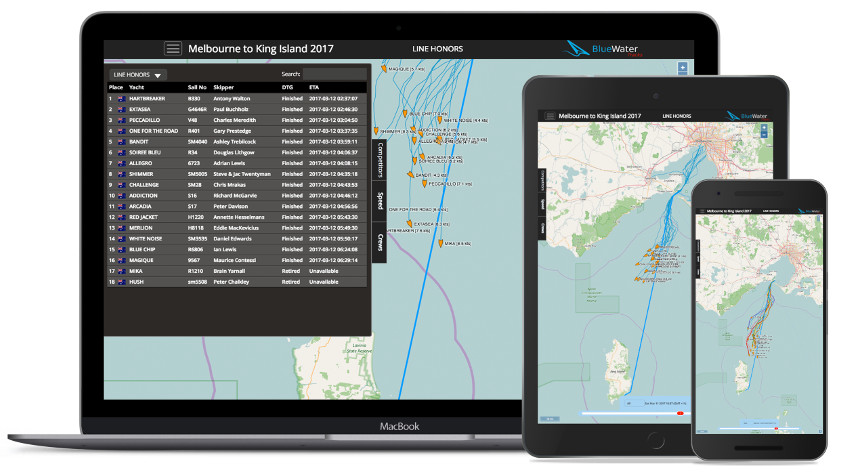
GETTING STARTED
Purchase your inReach trackers from Amazon . If using the phone app, go to step three
Activate your inReach device with Delorme
Sign up for your race organisers account account here
Add your trackers, crews and boats into your Blue Water Tracks account
Create a race and assign each boat a tracker
Publish the public race page link
Once the the race is set up, Blue Water Tracks will collect the positions and vector data from each tracker and display the boats progress through the live public race page.

List of current races
The Blue Water Tracks service is provided free of charge to yacht racing organisations. The service is funded by the philanthropy of the Dunoon Family Trust to ensure the highest level of infrastructure and service quality. Significant resource has been made available in the development of this service, ensuring that every race organiser has the tools needed for an effortless race tracking experience that enhances safety for all competitors.
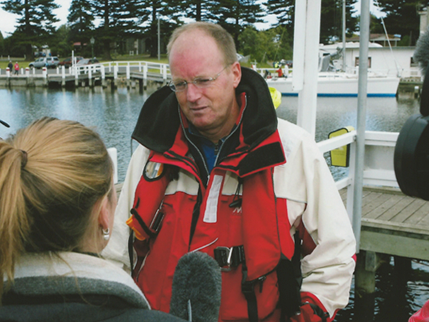
Grant Dunoon
Grant Dunoon founded Blue Water Tracks to deliver a service to yacht racing organisation and at the same time make safety affordable for every competitor.
In 2012 Grant was the skipper who rescued 6 crew when their yacht sank suddenly after the loss of their liferaft just before midnight during a devastating storm that wiped out the Melbourne to Port Fairy yacht race. Read more about it here .
Grant has be honoured with the Queen's Group Bravery Award, Australian National Search and Rescue Council Award, Yachting Australia (Australian Sailing) SOLAS Trust Award, Yachting Victoria's President's Awards, Royal Bright Yacht Club's Commodore's Awards. ORCV Ocean Racer of the Year.
Raju Maisnam
Dmytro Hrytsenko
Bhargav Konkathi
Ilya Alekseev
Documentation
Margo Kerdikoshvili
Graphic Designer
TESTIMONIALS

“We have found the service to be very reliable and the management portal simple to use. It has and is saving our club thousands of dollars each year and at the same time delivers an invaluable service to our members."
Simon Dryden
Ocean Racing Club Victoria
- Share full article
Advertisement
Supported by
You, Too, Could Be Sailing in the Sydney Hobart
Nonprofessional sailors, with some training, can land berths. Or pay for them.

By Kimball Livingston
Sailing in the Rolex Sydney Hobart Yacht Race might seem like an impossible dream to novices. It’s not. It’s a dangerous event for experienced sailors, but rookies who want the adventure and who are willing to undergo the training can buy their way onto a boat.
Worldwide, there are distance races free of crew-experience requirements, but today’s Sydney Hobart was forged in 1998, when a storm killed six people and sank five boats . The standards for participation are now considered the most rigorous anywhere. What you need to know is this: There are people eager to welcome you into the game. Some of them want your money. Others just want to share the sport they love. If you want in, you can get there.
“I have models of boats in my office,” said Dr. Raymond Schwartz, a Sydney neurologist, who was a harbor, not open-water, sailor. “Guys would come in and remark that I must like sailing. I would say yes. Then they’d ask if I’d ever done a Hobart. I’d say no. Their eyes would glaze over, and they’d change the topic. Apparently, I wasn’t a real sailor.”
Dr. Schwartz become “a real sailor” in the 2019 race with his two sons on the Eve, a ketch-rigged Swan 65 with a crew that trains aspiring ocean sailors for a fee. When three friends joined, the skipper capped the nonprofessional crew at that, and Eve became their boat for the race. With a group discount, the fee was 48,000 Australian dollars, or about $34,000.
Eve is owned by Steve Capell, a lifetime sailor who bought the boat to sail it around the world and who manages it as a business, Swanning Around . For this year’s Hobart race, Capell offered nine positions to crew members who would pay, alongside seven professionals. “We’re all looking after each other out there,” he said.
Anyone who doesn’t measure up in Eve’s regimen of skills training, safety training and team-fitness evaluation is not aboard for the race, and no amount of waving money in Capell’s face will change that. But most candidates pass muster, and it’s not all about the money.
Paying-crew positions partly offset the cost of keeping a big yacht ocean ready, but along with the revenue comes the satisfaction of watching people grow.
“Few people recognize at the time how they’re developing as a team,” said Benjamin Roulant, the skipper of Eve. “By the end, after outdoing themselves and pushing each other out of the comfort zone, they’ve formed bonds, and those bonds endure.”
On the fully amateur side, that dimension is dear to Ted Tooher, who is known around the Cruising Yacht Club of Australia, which organizes the race, for welcoming qualified first-time Hobart racers aboard his 40-foot Chancellor and for helping others develop the skills that might eventually make them qualified.
“I get a kick out of watching people sail into Hobart with tears in their eyes,” he said. “They’ve achieved something. Maybe the race was a bucket-list item, and for some people it strikes even deeper chords.”
Being female might be an advantage to landing a position, Tooher said. “As a teacher and project manager, and as a skipper, I find that mixed-gender teams work best. The language is cleaner, and there is a flow of positive attitude and respect.”
One woman who is racing in her first Hobart race on Sunday is Greta Quealy, a website editor who is stepping beyond her old habit of “going out to South Head above the harbor to catch the view of the fleet setting off.”
Quealy was an accomplished sailor, so when she approached the yacht club’s sailing concierge, which matches people, even novices, with boats, she was connected to Les Goodridge, skipper of the 50-foot Wax Lyrical. Newcomers are generally introduced to boat owners for the more casual races of the off season, giving seasoned sailors and novices an opportunity to prove themselves and develop. Goodridge tested Quealy in short races, liked what he saw, and kept her on for the Sydney Hobart.
“The introduction between a prospective crew member and a boat owner might be all it takes to build a lasting relationship,” said Noel Cornish, the commodore of the yacht club. “Many crew members have gone on to progress to offshore racing.”
Looking further into commercial products, there is Flying Fish Sailing , a Sydney-based sailing and adventure company that can shape up a beginner and build the experience to qualify for a Sydney Hobart crew. The company provides berths aboard its 55-foot Arctos, a veteran of 13 Hobart races, including two wins in its division.
Flying Fish offers a fuller curriculum than Eve, which plans to soon leave Australia to circle the globe, taking paying crew through ocean crossings and the Northwest Passage.
There can be more to the training than racing. For Dean Jagger, who trained on Eve but never raced, time on the water once meant fishing from a small boat. A crossing aboard Eve, from Australia to New Zealand, galvanized him. Now he explores the coastline of New Zealand on a boat of his own.
For Kate Troup, the normal path to a Sydney Hobart berth would have meant working hard to become an experienced offshore sailor “committed to a lot of racing beforehand, and I was never going to do it,” she said. “Then I learned that Eve is racing this year, and I could bypass most of that effort and sail on that very safe boat that will be comfortable, or as close to comfortable as it comes on the ocean.” She is sailing aboard Eve in Sunday’s race.
Dr. Schwartz and company had a lot to learn before the 2019 race. They did the requisite man-overboard drills, life-raft training, 1,000-offshore miles and the 24-hour overnight passage within six months of the race. They ate salt spray practicing in bad weather, then in the race had a relatively easy trip down the coast. They passed towering rock spires and crossed the exposed waters of Bass Strait to a morning finish in wisps of wind.
Before the race, Dr. Schwartz had asked to steer Eve across the finish line, but the thrill was more than he had imagined, even though Eve finished last in its division.
“There were people everywhere,” he said. “Crowds were cheering. Our families were waving welcome banners. It was loud. It was emotional.”
The unspoken rules about how to behave on a superyacht
- The superyachting world is very small, with only 5,800 yachts longer than 30 meters at sea.
- That insularity has bred a specific etiquette, which is often hard for outsiders to know about.
- These are the de facto rules of the most expensive billionaire toys, superyachts .

For the owners of superyachts , privacy is often the most valuable thing money can buy. It's one reason centimillionaires and billionaires pay eight or nine figures for a palace at sea, far from the prying eyes of land dwellers.
Even the most gossipy crew members should stay tight-lipped about the name of a former owner or charter guest, and many brokers shy away from answering benign questions.
That means that, aside from basic safety guidelines, most of the rules of superyachting are unwritten. The very few who need to know them — there are only about 5,800 yachts longer than 30 meters at sea, according to SuperYacht Times — already know them.
But if you do happen to be a lucky guest at a party on a billionaire's $500 million ship or find yourself included in a $1 million-a-week vacation, there are a few things you need to know.
After four days of touring superyachts that sell for as much as $75 million and chatting with the people who buy, sell, and work on them at the Palm Beach International Boat Show , Business Insider gleaned a few key edicts. Given the discreet nature of the industry, almost all the people we spoke with requested anonymity to protect their working relationships, but here's what they had to say.
Take off your shoes
While it's a basic rule for anyone in boating, it may come as a surprise to an outsider that no matter how rich you are or how expensive your heels are, in the vast majority of cases, you can't wear shoes on board.
It's partly for safety — you don't want anyone slipping on a wet deck — but partly to keep the yacht clean. So expect to see barefoot billionaires, and if you forgot to get a pedicure, bring a set of special boat shoes.
Don't make any assumptions about money — but know the signs
In the superyacht world, it's safe to assume almost everyone you meet is very, very rich, and many brokers and builders say you can't judge a book by its cover when it comes to prospective clients.
"It has nothing to do with how they're dressed," one broker told BI. "It's the biggest mistake you can make because a complete slobby-looking guy or couple could be a multibillionaire."
There are, however, a few clues. Watches are one; new footwear is another.
"Rich people always have new shoes," a superyacht expert said. But because of the shoe rule mentioned above, this tip probably applies only when they're on land.
Book your massage early
Wellness areas, including spa rooms with a massage bed or two and a professional-grade facial machine, are becoming must-haves on superyachts . Most have a customized spa menu and a crew member who doubles as a trained masseuse or beautician — and they're usually in high demand.
One captain said he'd implemented a booking system to ensure people weren't fighting for the same spots. A broker said sometimes masseuses would be so busy they wouldn't leave the small spa cabin for hours on end.
Related stories
So if you want to make the most of your relaxing time on board, reserve your pampering slot as soon as you get your welcome cocktail.
Pirates are more real than you'd think, and many superyachts have hidden safe rooms
While you might dress up as a fake pirate for an onboard theme party, there are very real ones — and other dangers — on the high seas.
In certain areas, including parts of the Indian Ocean and the Gulf of Aden, pirates are a cause of concern . In the Red Sea, owners are concerned about the Houthis .
Superyachts can come equipped with sonic weaponry, lockdown systems, and anti-drone protection. Builders are even designing safe rooms — which are apparently just as plush as the rest of the ship.
The longer the boat, the closer to $1 billion
While you can't judge a buyer based on appearances, you can judge them on the length of their boat.
One rule of thumb: If someone has a brand-new 50-meter vessel, chances are they have $1 billion to their name. If it's over 100 meters, expect the owner to have at least $2 billion. And for a boat bigger than that — like Jeff Bezos' 127-meter megayacht Koru — it takes many, many billions.
Money can't buy you everything
The world's biggest, most expensive yachts are custom-built by shipyards that produce only a handful of boats a year.
But no matter how many tens of millions of dollars clients are spending, there are things to which builders will refuse to say yes.
"In the end, the boat has our name," an executive from one of the world's biggest shipyards told BI.
They recalled a client who requested a yellow hull to match his Lamborghini . The shipyard declined, steering the client in another direction.
"If I don't like it, I don't build it. I finalize two or three contracts a year," another builder said. "If somebody can say your vessel is ugly, my reputation is bad."
Yacht crews are trained to make the impossible possible. A guest requests fresh caviar flown into the middle of the Caribbean? No problem. Fresh flowers every day while at sea? It'll cost you, but it can be done.
But they can't time travel, and captains and crew members say the thing that causes the most friction is when a client or owner wants to go from point A to point B — right now.
"The hardest request is when they want the boat in a place — yesterday," one captain said.
The best person to know? A friend with a superyacht
Superyachts are expensive to build and expensive to maintain . According to the industry standard, owning a superyacht will cost 10% of its new-build price annually. For a $100 million yacht, that's at least $10 million yearly going to crew, regular maintenance, insurance, fuel, and dockage.
Chartering, too, is costly . Beyond the list price, which can be hundreds of thousands a week, guests must pay for provisions, which are pegged at 35% of the charter fee, and are expected to tip between 10% and 20%.
So the most important unspoken rule of superyachting is actually that the only thing better than owning a superyacht is knowing someone else who does — and invites you along, of course.
Watch: Why it costs $1 million a day to run one of the world's biggest cruise ships
- Main content
90 Sunreef Power yacht honored with the Golden Crown in the category Discovery of the year on the Russian market
- Inspiration
Related News
Popular news this week, popular news this month, latest news.
- Yacht Charter & Superyacht News >
Written by Zuzana Bednarova
This image is featured as part of the article Sunreef Yachts to attend Moscow Boat Show for first time .
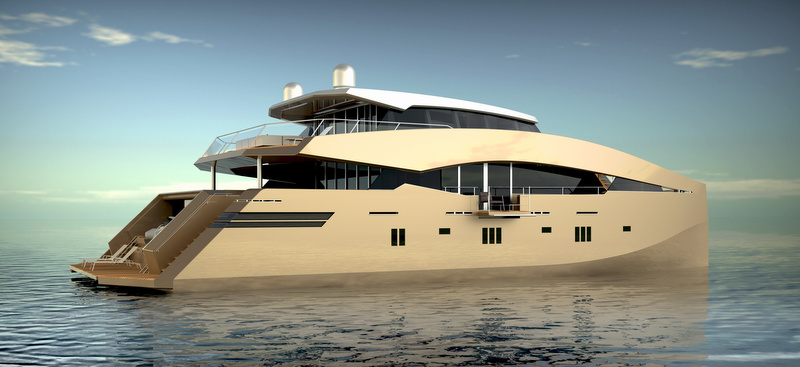
Please contact CharterWorld - the luxury yacht charter specialist - for more on superyacht news item "90 Sunreef Power yacht honored with the Golden Crown in the category Discovery of the year on the Russian market".
- Charity & Fund Raising
- CharterWorld News
- Classic Yachts
- Coronavirus
- Cruise Ship
- Ecological Yachts
- Expedition Yachts
- Expert Broker Advice
- Feature Superyachts
- Interior Design
- Legal & VAT Yacht Issues
- Luxury Catamarans
- Luxury Gulet
- Luxury Phinisi
- Luxury Trimarans
- Luxury Yacht Design
- Luxury Yachts
- Marinas & Harbours
- Marine Ecology
- Marine Electronics
- Marine Equipment
- Mega Yachts
- Modern Yachts
- Motor Yachts
- New Launch Yachts
- New To Charter
- Open Style Sports Yachts
- Private Jets
- Sailing Yachts
- Social Media
- Sports Yachts
- Superyacht Crew
- Superyacht Photographers
- Superyacht Products & Supplies
- Superyacht Refits
- Superyacht Reviews
- Superyachts
- Uncategorized
- Yacht Builders
- Yacht Charter
- Yacht Charter Destinations
- Yacht Charter Picks
- Yacht Charter Specials
- Yacht Delivered to Owner
- Yacht Designers
- Yacht Events & Boat Shows
- Yacht Fashion
- Yacht Industry News
- Yacht Photos
- Yacht Racing
- Yacht Racing & Regattas
- Yacht Safety Equipment
- Yacht Support Vessels
- Yacht Tenders
- Yacht Videos
- Yachting Associations
- Yachting Awards
- Yachting Business
- Yachts For Charter
- Yachts For Sale
Quick Enquiry
Superyacht news:.
Email Your Yachting News to: news @ charterworld.com
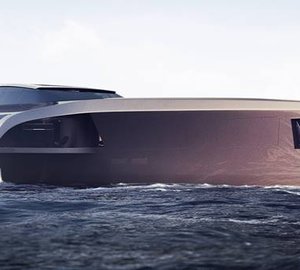
Sunreef Yachts’ international promotion and development
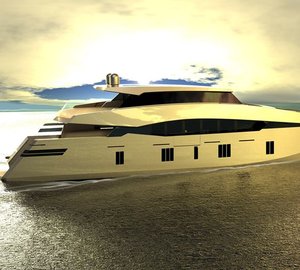
Upcoming Spring Boat Show Season for Sunreef Yachts

‘Discovery of the Year’ Award for 90 Sunreef Power Yacht at Luxury Lifestyle Awards
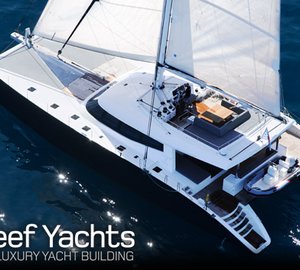
Sunreef Yachts strengthens its leading position as luxury catamaran builder in 2013
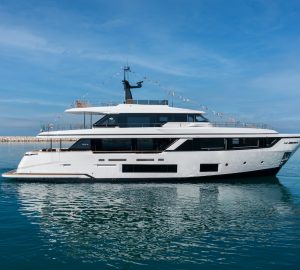
Ferretti Custom Line Navetta 30 series motor yacht GINDUNGO hits water in Italy
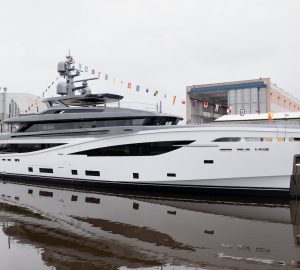
50m luxury motor yacht BEL1 launched in Pisa by Rossinavi
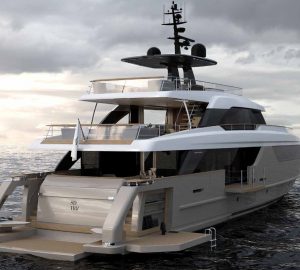
Luxury yacht UNIQUE S is brand new to the charter market in the Western Mediterranean
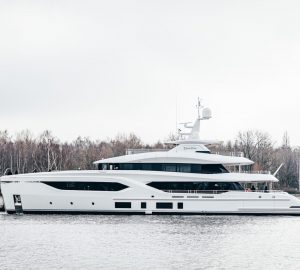
44m superyacht EXTRA TIME new to charter around the Western Mediterranean
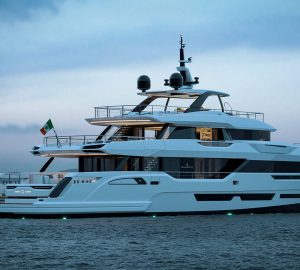
Baglietto announces the launch of 41m luxury yacht ASTERA
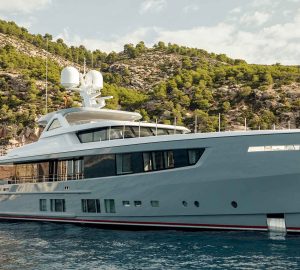
Another great special offer on board 36m motor yacht CALYPSO I
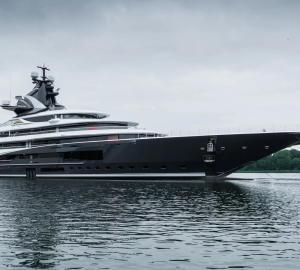
Superyacht KISMET – the 122m Lurssen motor yacht the charter market has been waiting for
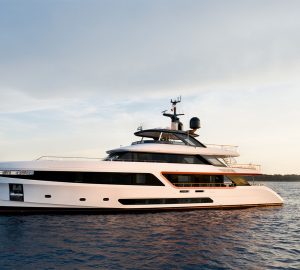
37m luxury yacht LEGEND offering unparalleled comfort on charters in the Western Mediterranean
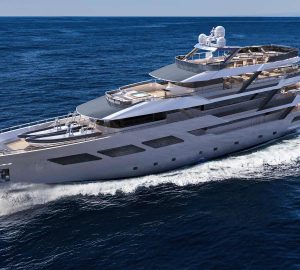
Discover our Top 10 brand new yachts available for charter worldwide this year
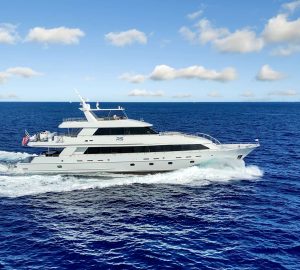
Florida charter yacht REAL SUMMERTIME offering 10% discount
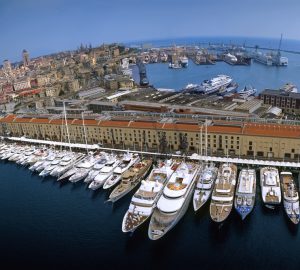
Looking ahead to the 2024 MYBA Charter Show in Genoa
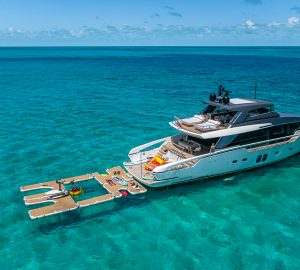
Discover summer in New England aboard a luxury charter yacht: Escape to this beautiful northeast corner of the USA
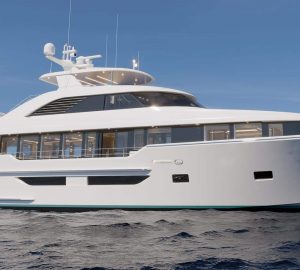
Westport announce the first hull of their 36m W117 range is nearing completion
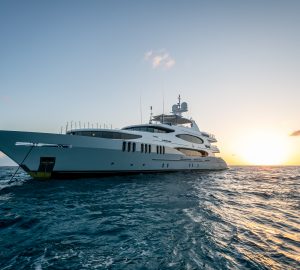
Last minute yacht charter deals in the Bahamas
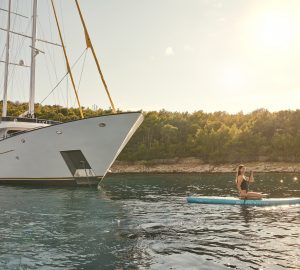
49m sailing yacht ANIMA MARIS is offering discounted rates for the remaining summer weeks in Croatia
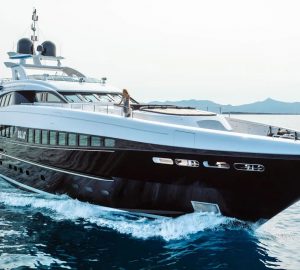
Take advantage of the exceptional 15% discount by 44m charter yacht BLISS in Greece
- International edition
- Australia edition
- Europe edition

One in three UK water workers verbally abused amid sewage fury, GMB finds
Exclusive: public anger over river pollution affecting employee safety, union survey suggests
Water industry workers say they have been physically assaulted and feel unsafe working alone for fear of attack amid a public backlash over sewage dumping.
More than one in three UK water employees have been verbally abused at work, according to a survey of almost 1,300 staff conducted by the GMB union .
Water companies in England faced a barrage of criticism last week as data revealed that raw sewage was discharged for more than 3.6m hours into rivers and seas last year – the worst year on record for storm water pollution.
The companies – including heavily indebted Thames Water which faces questions over its financial future after investors said on Thursday they were unwilling to invest further funds – have been widely condemned by the public and politicians over leaks and spills.
That anger appears to have manifested on the frontline. Workers complained that they had faced “very hostile” abuse from the public, in a series of anonymous testimonies delivered to the GMB and shared exclusively with the Guardian.
One employee said they had stopped interacting with members of the public after a colleague was “violently assaulted and was off work for weeks with a broken jaw” and another claimed an employee was attacked with a machete.
Another said they had been “physically assaulted by minors while shutting down a vandalised fire hydrant while their parents stood laughing”.
An employee, who now refuses to wear clothing with the company logo, wrote of an alleged incident where colleagues were dealing with a sewage spill in a road. “Drivers were purposefully splashing staff with sewage. He was soaked. It was in his eyes and face. Appalling and disgusting behaviour by the public,” they said.
Another worker said they now “feel unsafe working alone in a lot more places and areas than I used to”.
According to the survey, 52% of workers said they believed reports of sewage dumping had contributed to an increase in abuse.
Workers said they felt “underpaid and underappreciated” and that abuse frequently came from motorists, when works enforced road closures. Call centre workers had also suffered abuse, they said.
The GMB research found that just 20% of wastewater workers thought infrastructure was good enough to stop leaks, and the same number had witnessed unreported sewage spills in the past year. One in five said they had either personally been encouraged to under-report sewage spills, or knew a colleague who had.
One respondent said managers had not investigated reports of abusive customer behaviour as they were “afraid of customer complaints affecting the score card targets. It is easy for managers not to investigate aggressive customer behaviour.”
Gary Carter, GMB national officer, said: “No one should go to work and face abuse. But this situation is horrifying, because the negligent actions of water bosses in allowing sewage dumping to rocket has exposed their own workers to physical and verbal violence.
“GMB demands a zero tolerance approach to the abuse of water workers – and calls on water shareholders to fork out for the desperately need infrastructure to stop record sewage spills.”
Last week the Environment Agency launched a portal to make it easier for water company whistleblowers to safely report serious environmental wrongdoing by their employer.
The agency said it was a “bid to crackdown on sewage pollution and other environmental wrongdoing” and said any findings could be used to support enforcement action against companies, including financial penalties and criminal prosecution.
England’s privatised water firms have been criticised for failing to invest in infrastructure while paying out billions in dividends to investors.
Last week shareholders in Britain’s biggest water company, Thames Water, said they had withheld £500m from the indebted utility after a standoff with the regulator, Ofwat, which is refusing their demands to increase customer bills by 40%.
In response, a bond issued by Thames Water’s parent company has now fallen to record lows. The £400m bond, which was issued by the water supplier’s parent company, Kemble and which matures in 2026, has lost more than 80% of its value over the past 12 months. It halved to only 12.7p after the shareholder update, before lifting slightly to 14.4p on Tuesday.
Kemble is expected to try to persuade its lenders to agree to a debt for equity swap .
- Water industry
- Thames Water

Regulators urged to act over water companies’ record sewage discharge

Look at the Thames and know the time for metaphors is over: our politics is drowning in effluent

England’s sewage crisis: how polluted is your local river and which regions are worst hit?

Water companies in England face outrage over record sewage discharges

People in the UK: tell us about your local river and the environmental issues affecting it

Boat Race organisers warn rowers not to enter water after E coli discovery

Water firms’ profits in England and Wales almost double since 2019, find Lib Dems

Ofwat accused of cover-up over dinners with water companies
Most viewed.

IMAGES
VIDEO
COMMENTS
Read on to learn what your crew wants you to remember each race! Photo by Sharon Green. While it's important to master your position on the boat, it's equally as important to understand what's going on in other domains and what you can do to make your teammates' life easier and help the boat sail smoothly. We reached out to a mix of ...
August 30, 2022. The success of a racing sailboat depends entirely on the ability of each person on the boat to know and execute their role in high-pressure situations. While boat-dependent, all positions are some combination of the responsibilities of driver, bow, tactician, trimmer, and pit. The driver makes the final decisions and steers ...
The bigger the boat, the more complicated the job. If they don't have full-time professional management, most regatta entrants will liaise with a "Den Mother". Brakenhoff suggested two such women who manage logistics for racing yachts, Polly Baptist and Nikki Smith. Both are former superyacht crew well versed in regattas.
of getting a good position on a boat. There are Seven Critical Positions on a racing Yacht: Helmsman / Skipper Tactician Main trimmer Port Trimmer Starboard Trimmer ... trims easier than the Three R. (R is for race, C is for cruise) The number Four sail is 70%, has a wind range from 18 to 30+ kts. This sail is a partial hoist, and has a higher ...
Yacht racing is an exciting and challenging sport that requires a dedicated crew. It is important to understand the different roles on the crew so you can make sure your team is ready to sail. The main positions on a yacht racing crew are the skipper, tactician, navigator, helmsman, bowman, mastman, trimmer, and pitman.
Yacht racing is an exciting and popular sport with events and races held all over the world. From the world-famous Americas Cup to local regattas, there are races and events of all sizes and skill levels. The Americas Cup is the oldest and most prestigious yacht race in the world, with the first race held in 1851.
Teamwork: Yacht racing is a team sport that requires effective communication and collaboration. Working together with a crew to navigate the boat and make strategic decisions fosters a sense of camaraderie and unity. Skill development: Engaging in yacht racing allows beginners to cultivate various skills.
Scoring systems are applied to determine winners based on elapsed time, corrected time, or handicap ratings. 10. Anti-doping regulations are enforced to maintain the integrity of yacht racing as a clean sport. These rules and regulations provide a framework that allows for fair competition and keeps participants safe.
In the Caribbean sailing capital of Antigua, Ondeck Sailing offers crew positions on the 65-foot performance yacht Spirit of Juno for international regattas staged in the region. Individual ...
Race Organiser Notes. Arcadia - Retired - mainsail damage. Bacardi - Retired - rigging damage. Currawong (TH) - Retired - electrical issues. Georgia Express - Retired - rigging issues. Maritimo 52 - Retired - rigging damage. Millennium Falcon - Retired - crew illness. Pacman (TH) - Retired - runner damage.
Stan Honey was the navigator for LDV Comanche in 2017 when the boat set the elapsed-time record in the Rolex Sydney Hobart Yacht Race. "The job of the navigator today is making these risk ...
The 2022 Golden Globe Race is a solo, nonstop yacht race around the world with no assistance and without the use of modern technology. This means the skippers can't use GPS, chartplotters, electric winches, autopilots, mobile phones, iPads or use synthetic materials like Spectra, Kevlar or Vectron. Their only means of communication is via ...
The Second and Third Engineers report directly to the Chief Engineer. They assist in maintaining all mechanical and electrical operations of the yacht. 2nd Engineer. €3,000 - €10,000. 3rd Engineer. €2,500 - €6,500. Sole Engineer. €3,500 - €12,000. Motorman.
Boat positions. In the sport of rowing, each rower is numbered by boat position in ascending order from the bow to the stern (with the exception of single sculls). The person who is seated on the first seat is always the 'bow', the closest to the stern is commonly referred to as the 'stroke'. There are some exceptions to this: Rowers in ...
Sailing Positions. While the titles and roles of the various crew members on a sailing boat may vary depending on the league, race, and type of vessel, here are a few common positions you will hear of in sailing: Tactician/Trimmer. Driver. Mastman.
Crewseekers is run by experienced, professional sailors offering a friendly and helpful service to yacht crew and owners. We are the original yacht crew introduction agency - established for over 25 years, offering amateur and professional sailing opportunities throughout the world. Amateur and professional yacht crewing positions available ...
The 2023-24 Ocean Globe Race. In the spirit of the Whitbread, 14 yachts from 23 different countries set off from Cowes to compete in The Ocean Globe Race 2023-24. Hundreds of spectator boats cheered the start of the Ocean Globe Race on Sunday 10 September, as 14 iconic yachts raced through the line off Cowes, at the start of a 27,000-mile ...
What Are the Different Yacht Racing Positions? Written By Bill Michaels. Bill is an experienced yachting enthusiast and author. He has been sailing for over 20 years and has sailed around the world multiple times. He has written numerous articles on yachting and is a frequent contributor to many yachting magazines and websites.
Ocean yacht race and rally satellite tracking with public race map, bio's, boat and crew photos. Perfect for all ocean yacht races and rallies. ... Blue Water Tracks will collect the positions and vector data from each tracker and display the boats progress through the live public race page.
When three friends joined, the skipper capped the nonprofessional crew at that, and Eve became their boat for the race. With a group discount, the fee was 48,000 Australian dollars, or about $34,000.
Superyachts are expensive to build and expensive to maintain. According to the industry standard, owning a superyacht will cost 10% of its new-build price annually. For a $100 million yacht, that ...
The Moscow Boat Show is the own Crocus Expo IEC project and is supported by Aston Martin Moscow, Burevestnik Group logistics department and the Yachting specialized magazine.. The exposition space increased up to 30 000 sq m and was accommodated in all 4 exhibition halls of the fairgrounds! 280 Russian (Arkhangelsk, Vyborg, Kazan, Kaluga, Republic of Karelia, Moscow and Moscow region, Nizhny ...
The scale of the project confirms confident positions of its positive development. Moscow Boat Show is the largest project in Russia presenting all the best in the world of yachting. The exhibition annually shows high level of attendance and has already proved as significant and noteworthy event in the world of yachts and boats.
Please contact CharterWorld - the luxury yacht charter specialist - for more on superyacht news item "90 Sunreef Power yacht honored with the Golden Crown in the category Discovery of the year on the Russian market".
Boat Race organisers warn rowers not to enter water after E coli discovery 27 Mar 2024 Water firms' profits in England and Wales almost double since 2019, find Lib Dems